Lisbon, Portugal’s coastal capital, is a city where the past and present collide in a kaleidoscope of colour, culture, and captivating scenery. Framed by the rolling waves of the Atlantic, this sun-drenched metropolis boasts an array of historical landmarks, vibrant neighbourhoods, and culinary delights, making it a quintessential European destination. From the storied towers of Belém to the narrow, cobblestoned lanes of Alfama, Lisbon invites adventurers and aesthetes alike to delve into its rich tapestry of life. Yet, the allure of this city doesn’t end at its boundaries. As one ventures beyond, they discover the diverse beauty and charm that the surrounding region holds—a testament to Portugal’s varied landscape and its deep-rooted heritage. Be sure to make use of UBER or BOLT as ride sharing is very cheap and a great option to traverse these hilly regions.
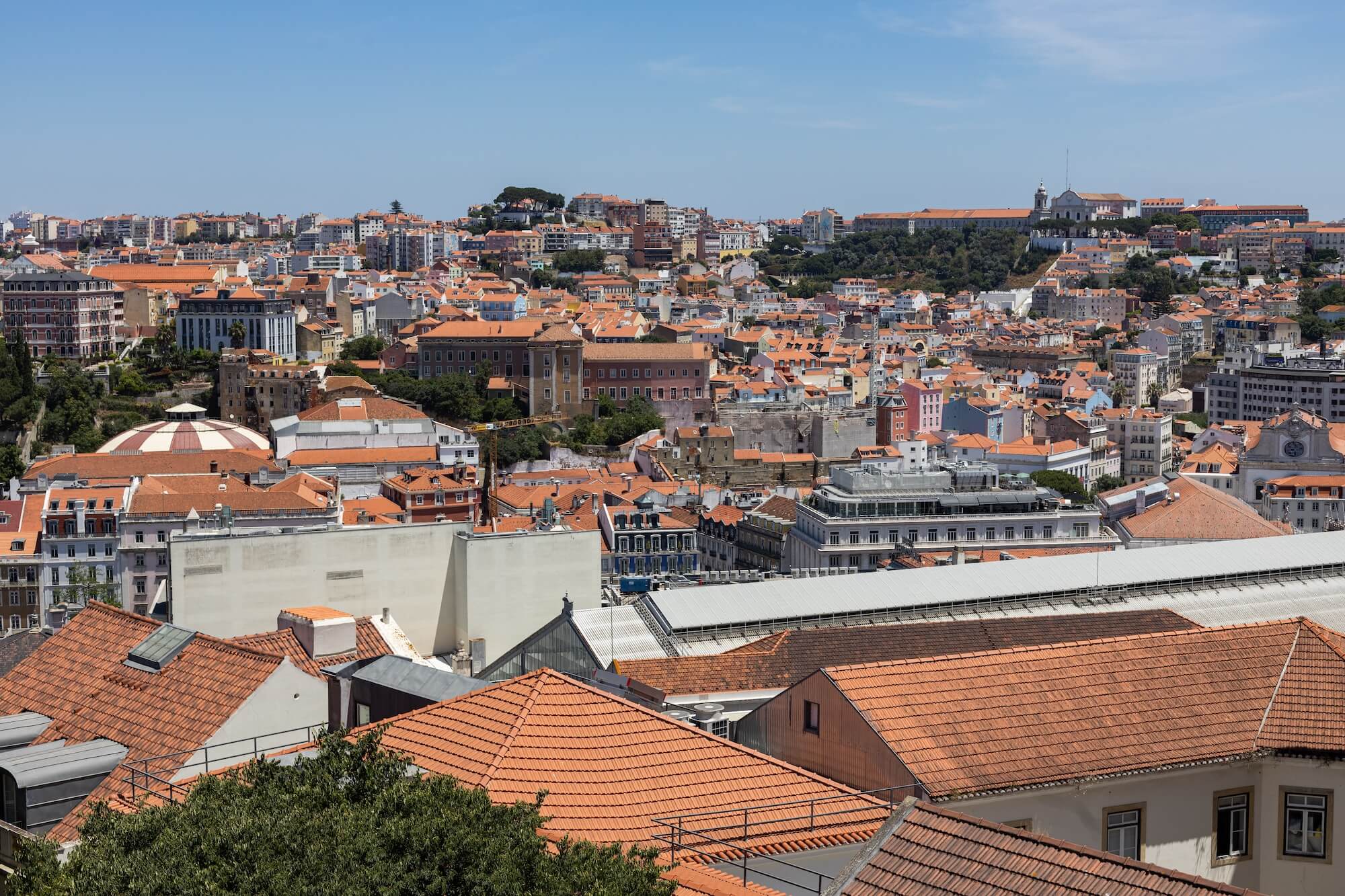
Where to stay in Lisbon
Palácio Ludovice
The Palácio Ludovice, the first place we stayed in Lisbon, is a significant piece of the city’s architectural heritage. Located in the heart of Lisbon, across from the Miradouro de São Pedro de Alcântara, the palace reflects the grandeur of 18th-century design and aesthetic sensibilities. The Palácio Ludovice was constructed as the private residence of João Frederico Ludovice, a German goldsmith and architect, who was notably involved in the design and construction of the grand Mafra Palace, one of Portugal’s most remarkable Baroque buildings.
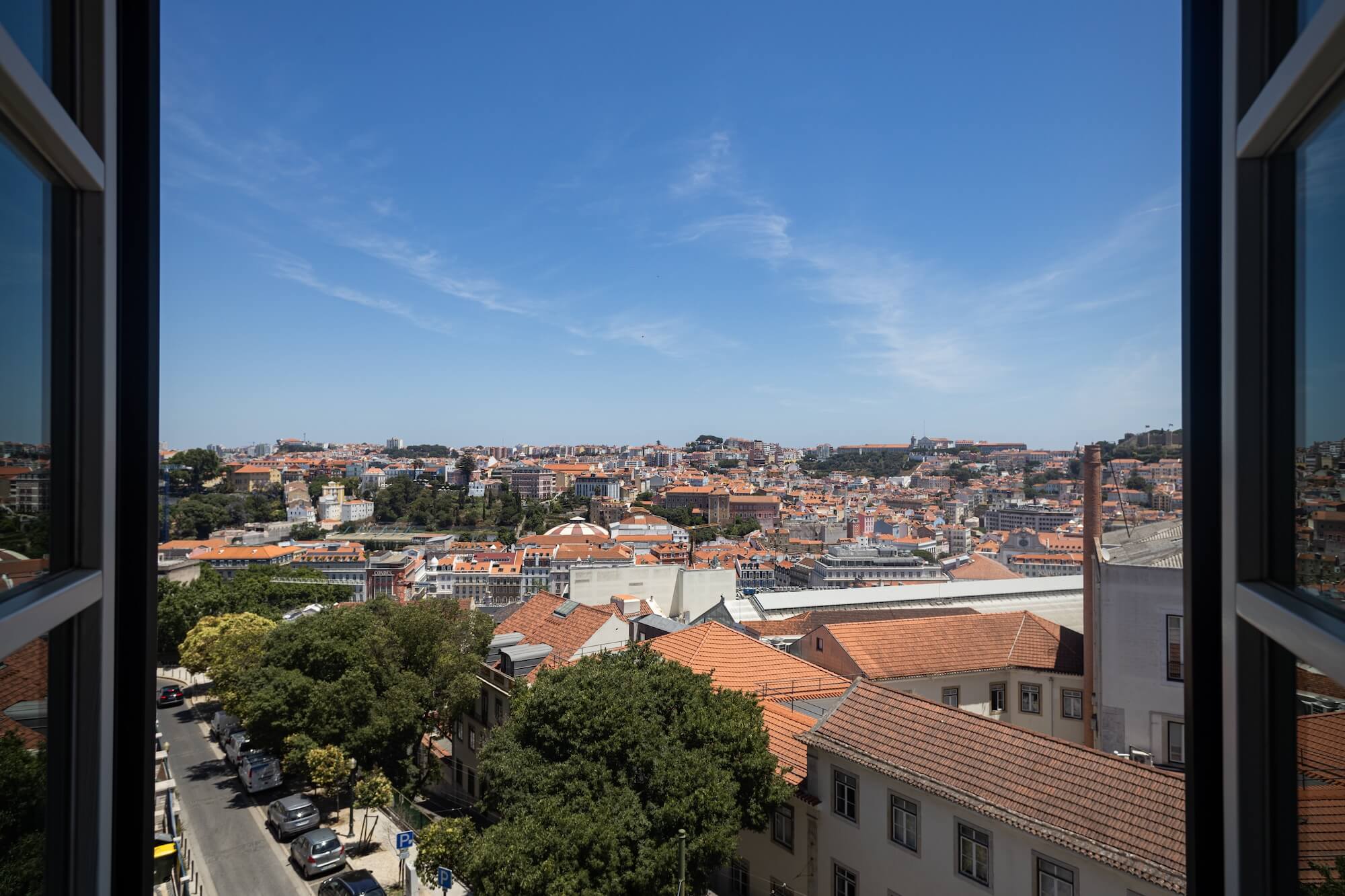
The fact that Ludovice was an architect himself is evident in the intricate design and elaborate detailing found throughout the palace. The architectural style of the palace showcases Baroque and Rococo influences of that era, featuring grand facades, luxurious interiors, and ornate decorations. Sculptural elements, carved stonework, and sumptuous materials give the building an air of elegance and sophistication. Our room was both beautiful and comfortable.
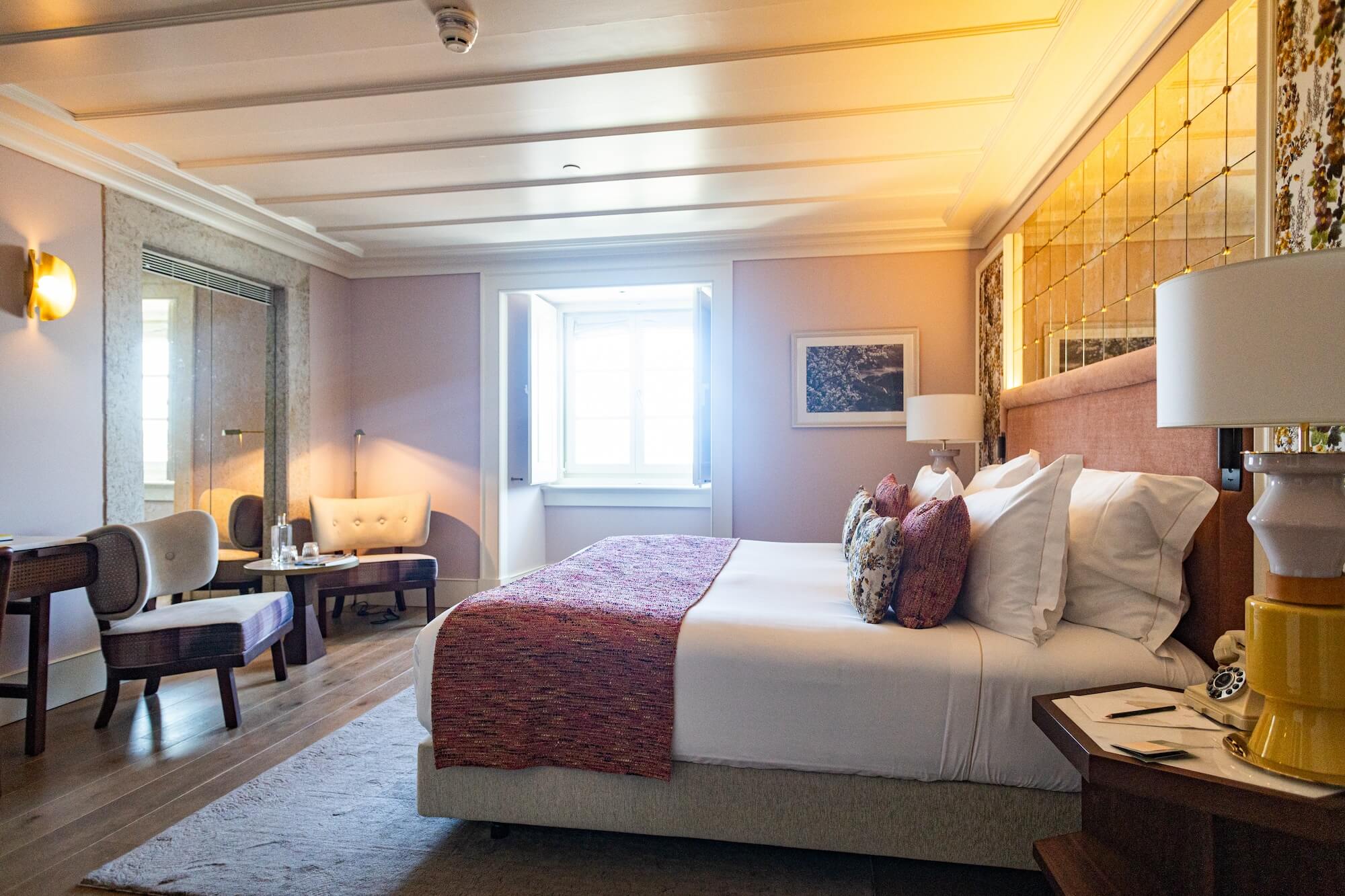
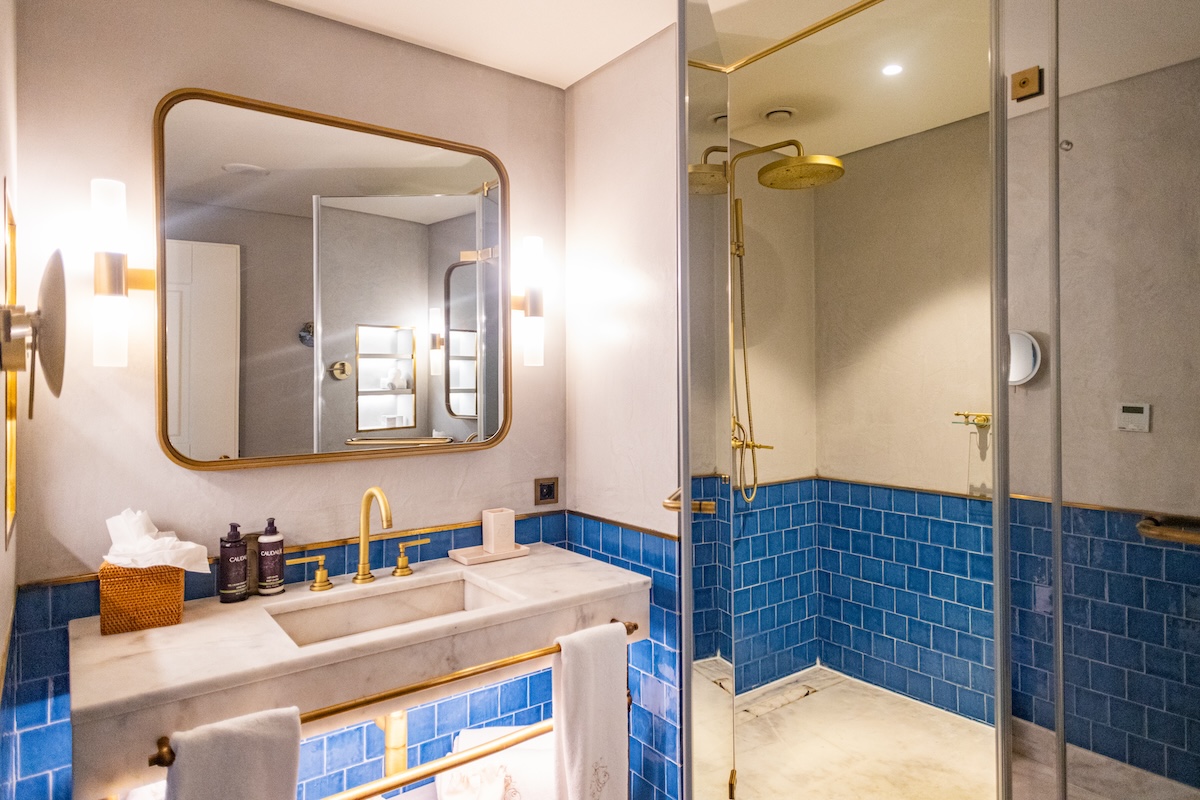
The hotel has a number of great amenities for guests. It has a very cool gym located in an old wine cellar equipped with some great machines to keep you on your routine while visiting Lisbon, it has an amazing restaurant that serves a buffet breakfast with the ability to order hot food – it also serves an amazing dinner that is a destination of its own and there is a Caudalie spa attached to their building. The location is perfect as it is very central and you can walk or take the metro to anywhere fairly easily.
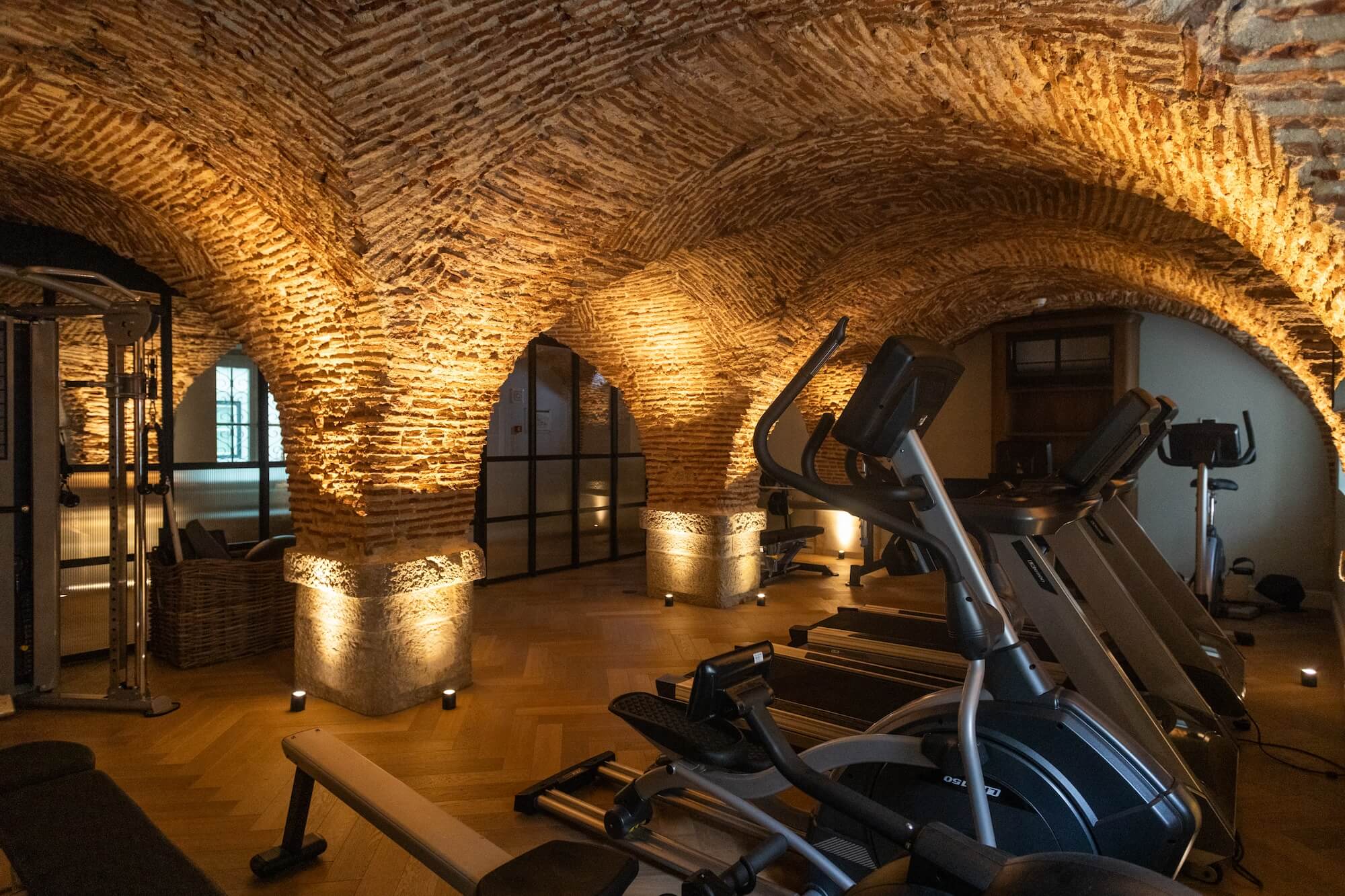
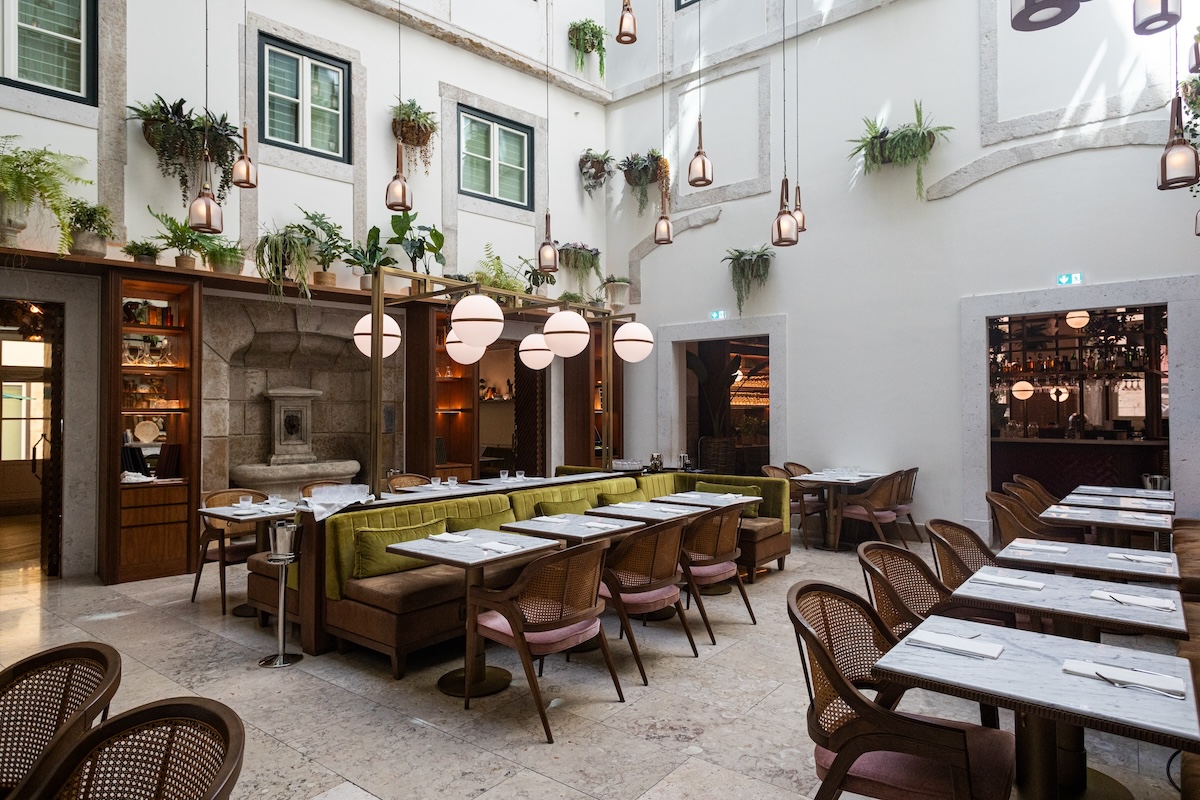
We ate at their restaurant called Federico several times while there. The breakfasts were for sure our favourite. So many choices of cheeses, baked goods, cured meats, fruit and desserts that you may need a nap after all the delicious options. The dinner had a few good items that we tried. Our favourite was the shrimp cappuccino, a shrimp based soup with small balls of passion fruit and coconut foam that is served in a coffeecup. It was creamy and salty with a burst of tartness from the passion fruit. The coconut foam added to the richness of this creative dish.
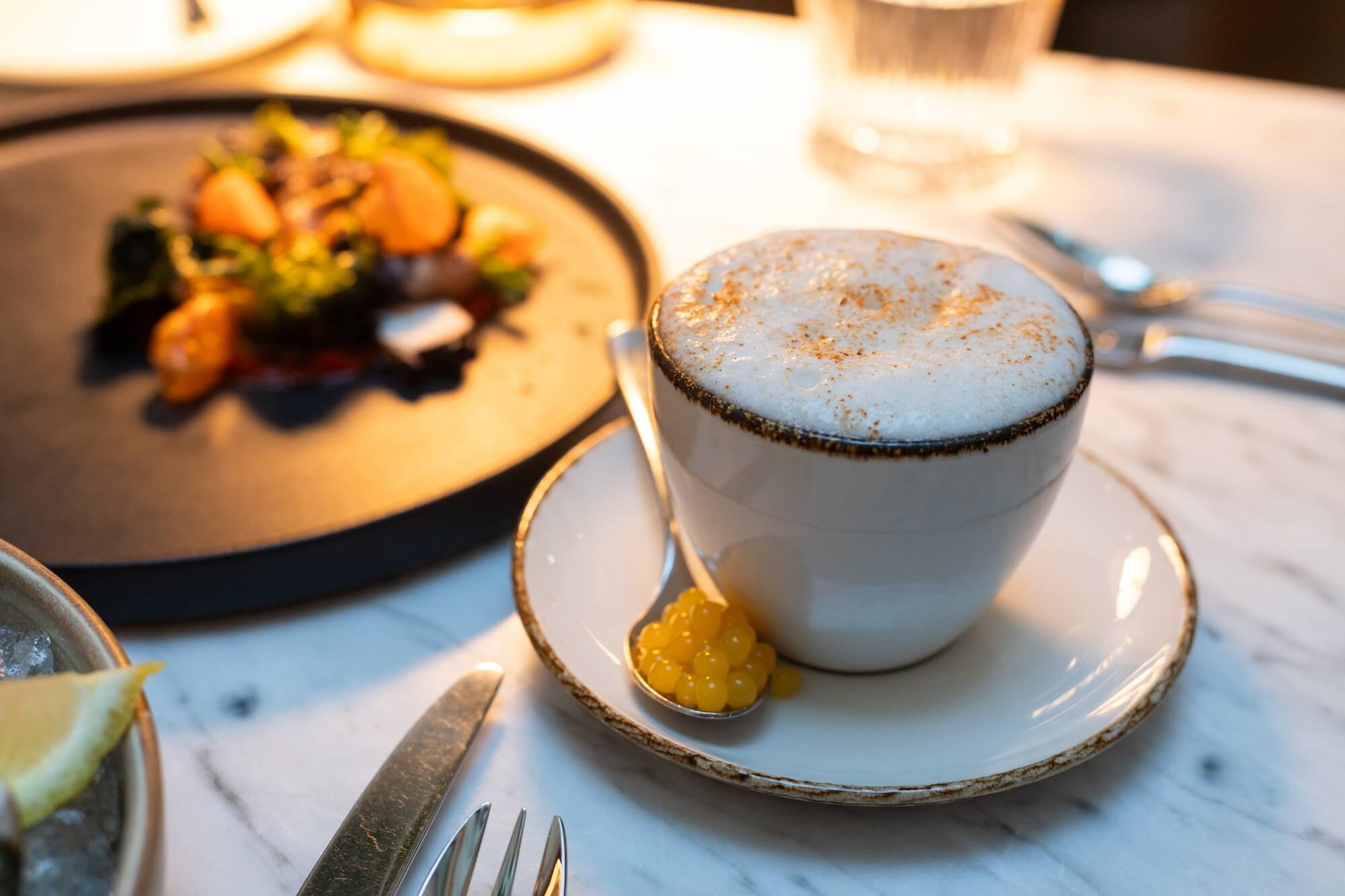
Hotel Casa Palmela
Tucked away within the verdant embrace of Arrábida Natural Park, Hotel Casa Palmela stands as a testament to the timeless elegance and tranquility that personifies the quintessential Portuguese retreat. During our recent two-night stay, this quinta unveiled not just its stately grandeur but an array of immersive experiences that resonate with the soul of the traveler seeking both adventure and repose.
From the moment of arrival, the warmth and excellence of Casa Palmela’s hosts and staff are evident, embodying the hospitality Portugal is renowned for. The historical estate, once a private home belonging to a noble family, has been transformed into an intimate haven, where each guest is welcomed not merely as a visitor, but as part of its storied tradition.
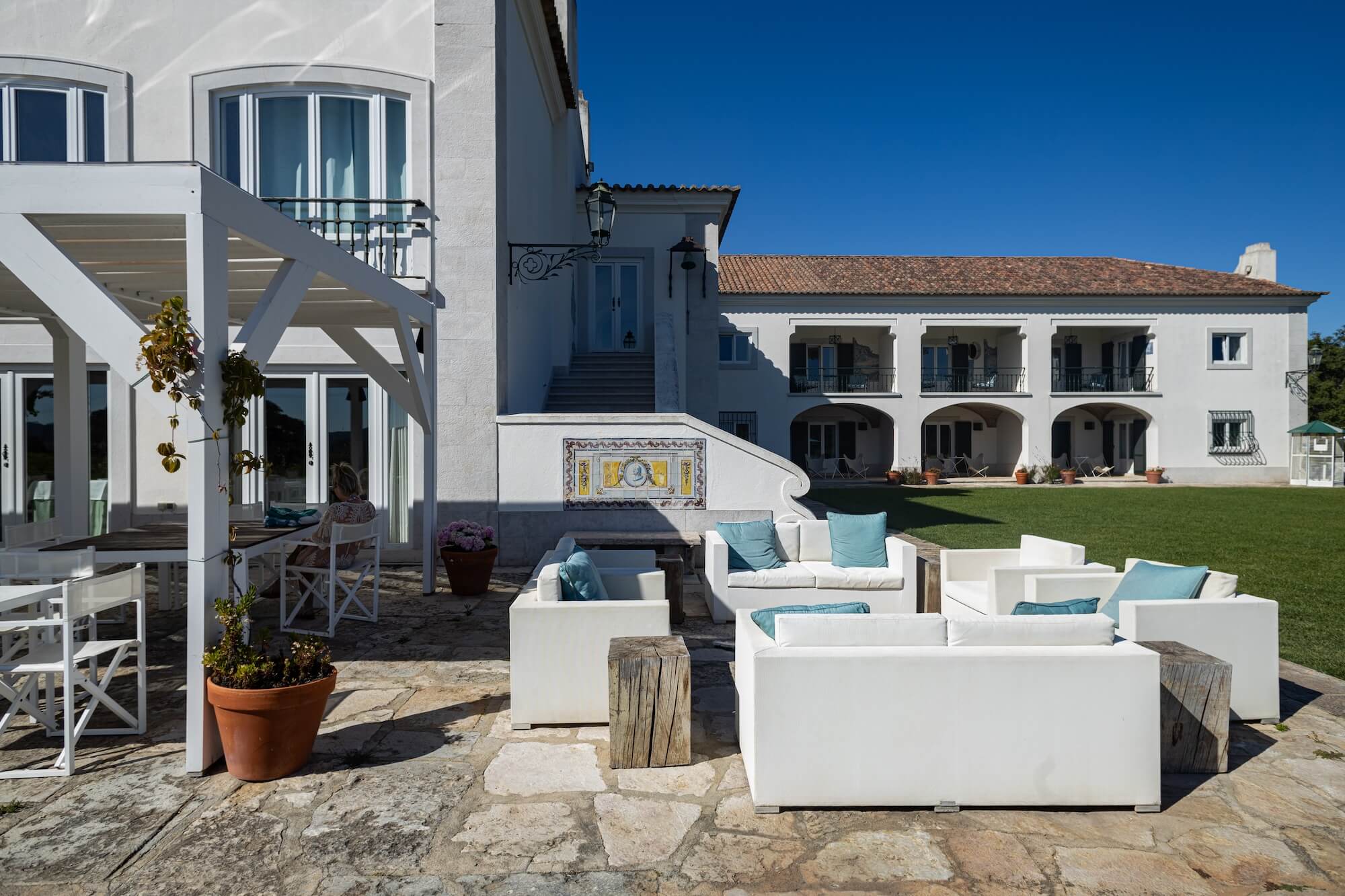
The days at Casa Palmela bloom with possibilities. For the maritime enthusiast, captivating boat rides along the azure waters of the nearby coast evoke a sense of nautical wonder. For city goers, be sure to check out Setúbal. Equestrian dreams come to life with horseback riding adventures through the scenic landscapes of the park. The hotel’s pool is a sanctuary within a sanctuary, providing a blissful respite beneath the nurturing Iberian sun. If you are craving creative exploration, guests can partake in organized trips to discover the ancient art of Portuguese tile making. These cultural excursions offer firsthand insight into one of Portugal’s most cherished crafts, allowing visitors to not only observe but also engage in the creation of beautiful azulejos.
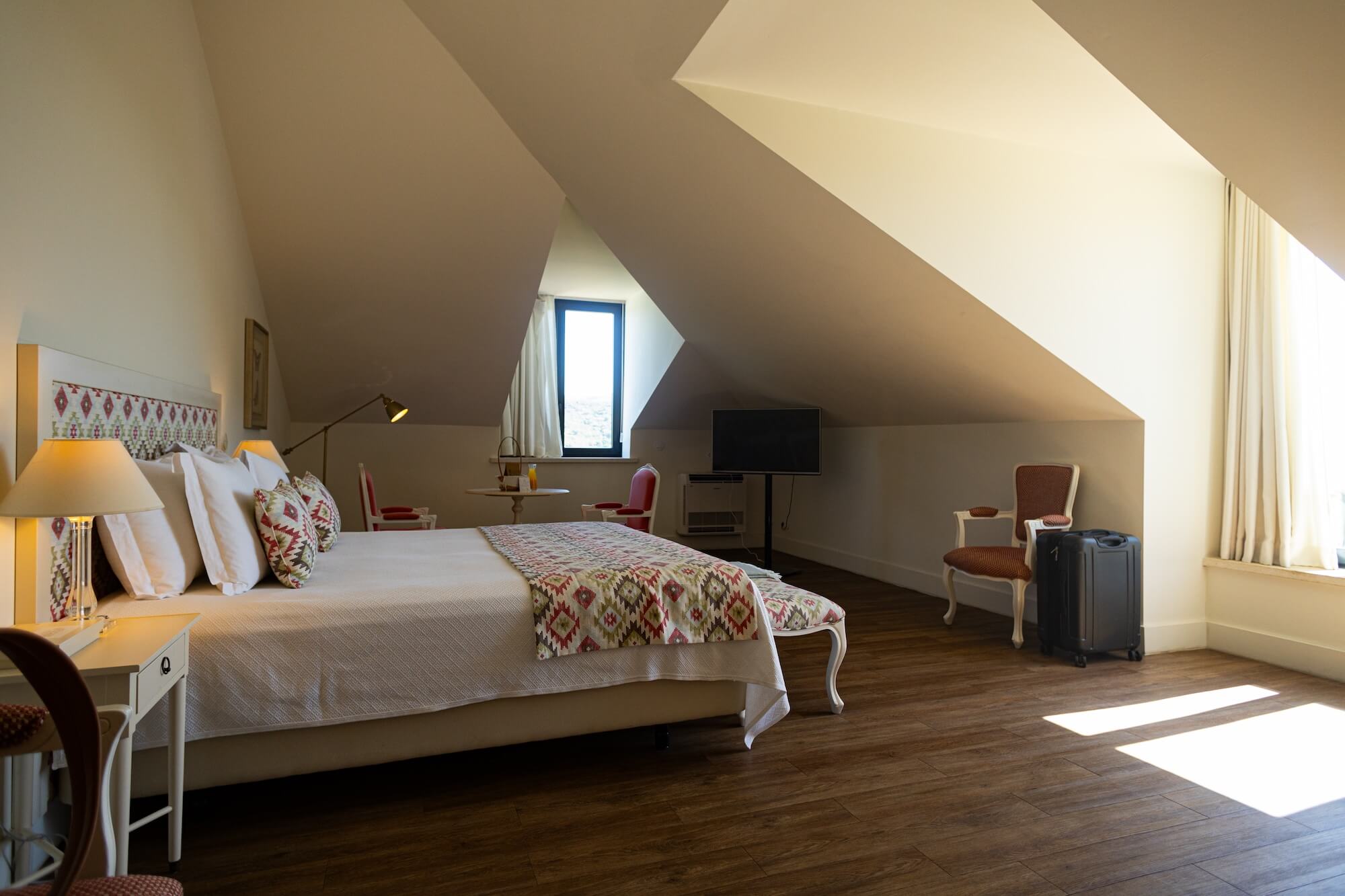
Setúbal
Hotel Casa Palmela is located near Setúbal, roughly 50 kilometres from Portugal’s capital, It carries the legacy of an ancient Roman settlement into its modern incarnation as a bustling city. Its transition from a vital medieval fishing port to a contemporary urban centre is seamlessly woven into its rich cultural fabric.
One of the city’s hallmarks is its deep-seated maritime heritage, splendidly encapsulated in its famous Livramento Market. Known as one of the best fish markets in Portugal, and even the world, the Livramento Market serves as a vibrant showcase of the local fishing industry’s bounty. Established in 1930, the market is not only a place for commerce but a cultural icon, offering an array of fresh seafood alongside a feast for the senses with its dazzling azulejos (traditional Portuguese tiles) that depict the rich maritime life of the region. This market stands as a testament to Setúbal’s enduring relationship with the sea and underscores the city’s reputation for gastronomic excellence, particularly its delectable seafood dishes.

The enchanting beauty of Setúbal extends to its natural surroundings, most notably the Tróia Peninsula. This sliver of land is celebrated for its 13km stretch of pristine beaches, crystal-clear waters, and pine-forested dunes, offering a serene getaway from the bustle of city life. Nearby, Albarquel Beach beckons as Setúbal’s most accessible seaside retreat, promising visitors a taste of the idyllic Portuguese coastline.
Setúbal also serves as the entry point to the lush landscapes of the Arrábida Natural Park. This protected area, with the Serra da Arrábida at its core, showcases one of Portugal’s rare maquis ecosystems and stretches down to the picturesque village of Sesimbra. The park is a haven for biodiversity and offers unspoiled views of the remarkable coastal scenery.
Another monumental testament to Setúbal’s rich historical tapestry is the Forte de São Filipe (Castle of São Felipe). Constructed in the 16th century, this mighty fortress was designed to guard the city against pirates and invasions, with its strategic position offering commanding views over the Sado Estuary[5]. Today, it stands as a beacon of the city’s historical resilience, providing visitors with panoramic vistas that encompass the city’s urban landscape and the natural beauty that surrounds it.
Private Boat Tours
Hotel Casa Palmela offers an enchanting boat ride experience that promises to unveil the stunning coastal beauty of Setúbal and Arrábida Natural Park from a unique perspective. Through a partnership with Once Upon a Day, a tourism company that offers unique experiences, guests will depart from the vibrant marina of Setúbal, and are whisked away on a journey through the tranquil waters, exploring natural wonders, idyllic sandbars, and the lush expanses of the surrounding national parks.
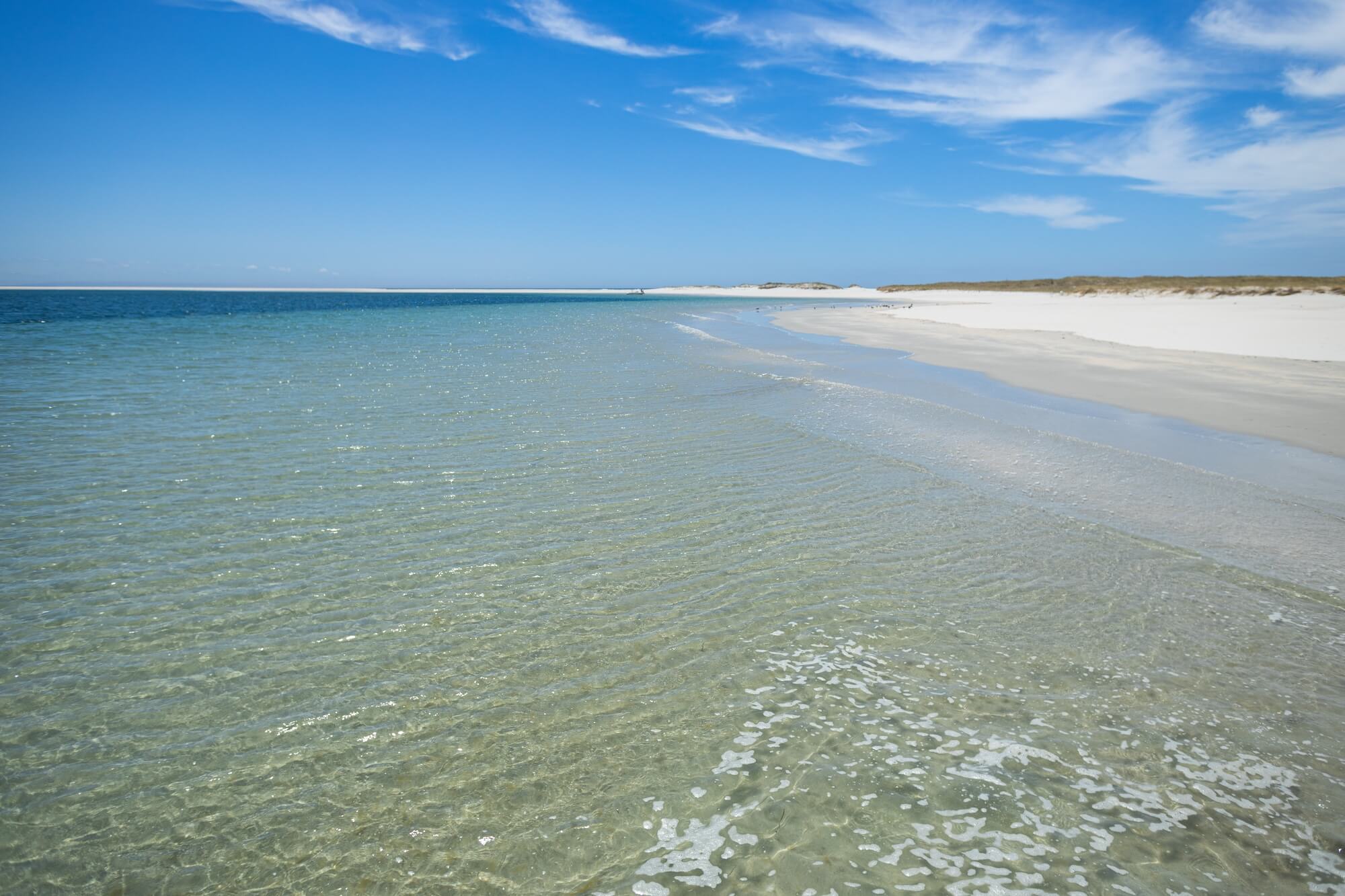
A highlight of this maritime excursion is the visit to the pristine sandbars. Here, guests can disembark for a moment of relaxation and seclusion on white sandy stretches. The tranquility and raw beauty of these spots make them perfect for enjoying a leisurely picnic. Hotel Casa Palmela enhances this experience by offering the option to bring along a carefully prepared picnic basket, allowing guests to indulge in delicious local fare amid the serene backdrop.
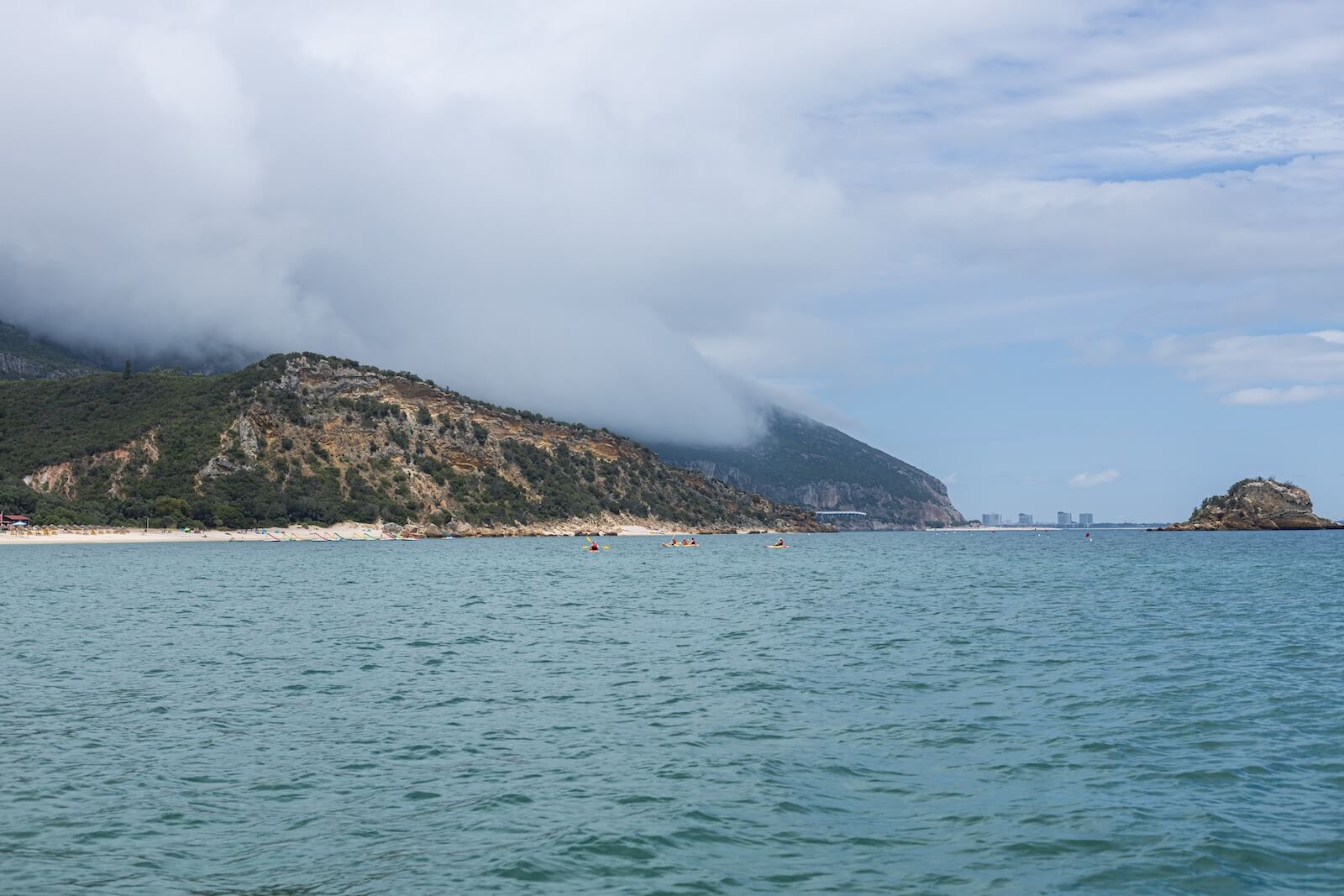
Further enriching the boat ride is the visit to a secluded fish restaurant, O Farol, located in Portinho da Arrábida cove. It has been in operation since 1982 and is owned by a local fisherman named Orlando. In an impressive display of coordination, a boat from the restaurant meets Casa Palmela’s guests on their vessel, transporting them to the eatery. This unique approach to dining is not just about the food—it’s an adventure in itself, blending gastronomy with the natural beauty and rugged landscape that makes this area so distinctive.
Horseback Riding
Equestrian enthusiasts and novices alike will find delight in the horseback riding experiences offered by Hotel Casa Palmela. This unique activity provides an unmatched vantage point to appreciate the expansive beauty of their property, including vineyards, forests and cork trees.

As riders weave through the trails, they’ll encounter the quintessential cork trees, a proud emblem of Portugal’s natural resources. Portugal is famed for its cork production, leading the world in cork exports, and during the horseback ride, guests can witness the cork oaks in their natural environment. The bark of these trees is carefully harvested without ever harming the tree itself, allowing the cork to regenerate over time—a sustainable practice that has been refined over generations.
Tile Workshop
Azulejos, the traditional Portuguese tiles, are a deeply entrenched symbol of Portuguese culture and artistry. These intricately patterned, ceramic tiles are not just decorative elements; they narrate tales of history, religion, and culture, adorning the walls of churches, palaces, schools, and homes. The craft of tile-making in Portugal dates back to the 15th century when the Moors introduced it to the Iberian Peninsula. Over the centuries, azulejos evolved in style, featuring geometric motifs, lavish scenes, and vivid representations of historical events. Today, these tiles remain a cherished aspect of Portuguese architectural beauty.
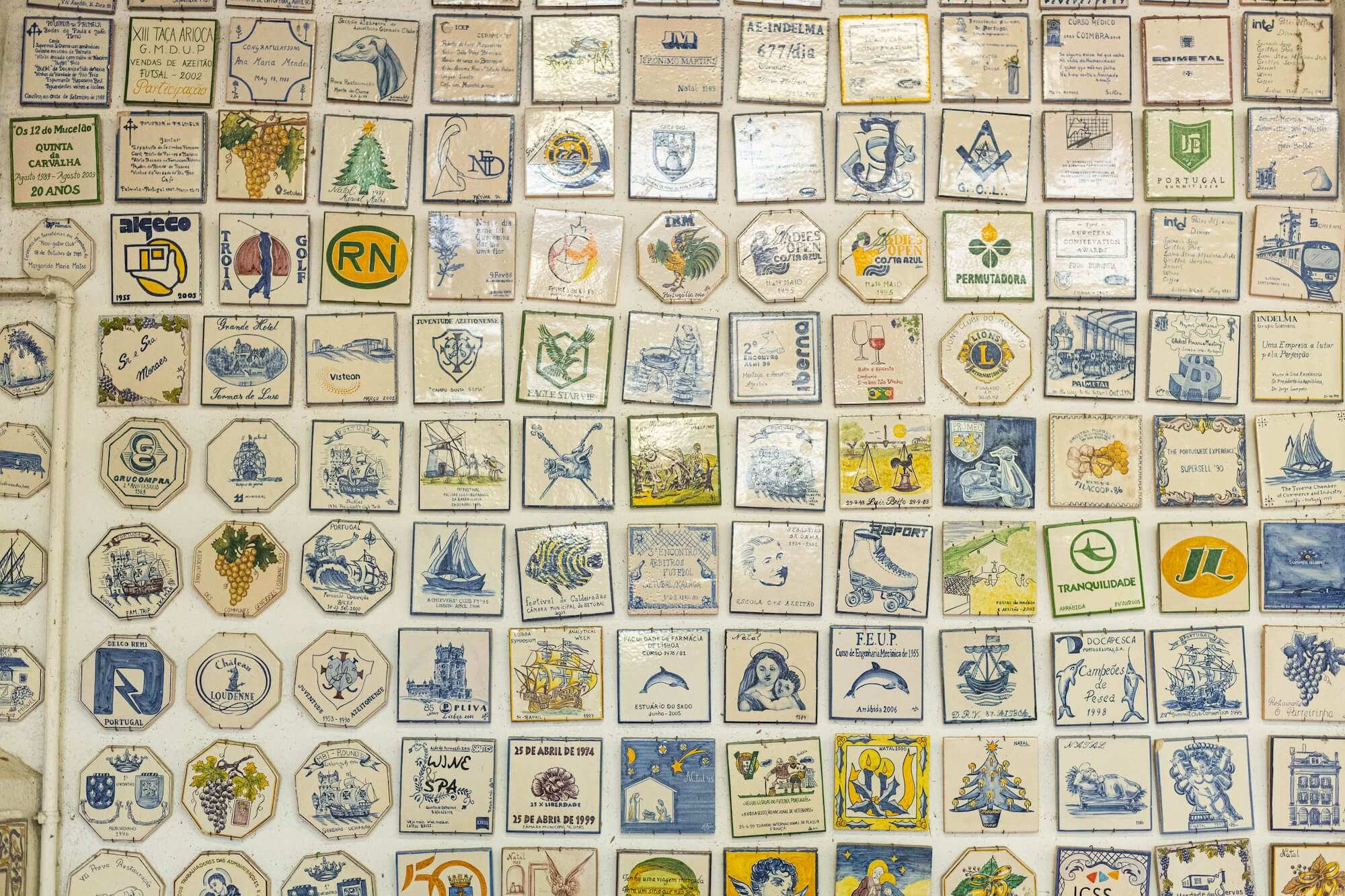
For those intrigued by the art of azulejo making, opportunities abound to engage with this traditional craft firsthand. One such experience can be found through the offerings of Hotel Casa Palmela. Here, hotel guests and visitors can immerse themselves in the ancient craft through classes that provide a hands-on approach to understanding and creating azulejos.
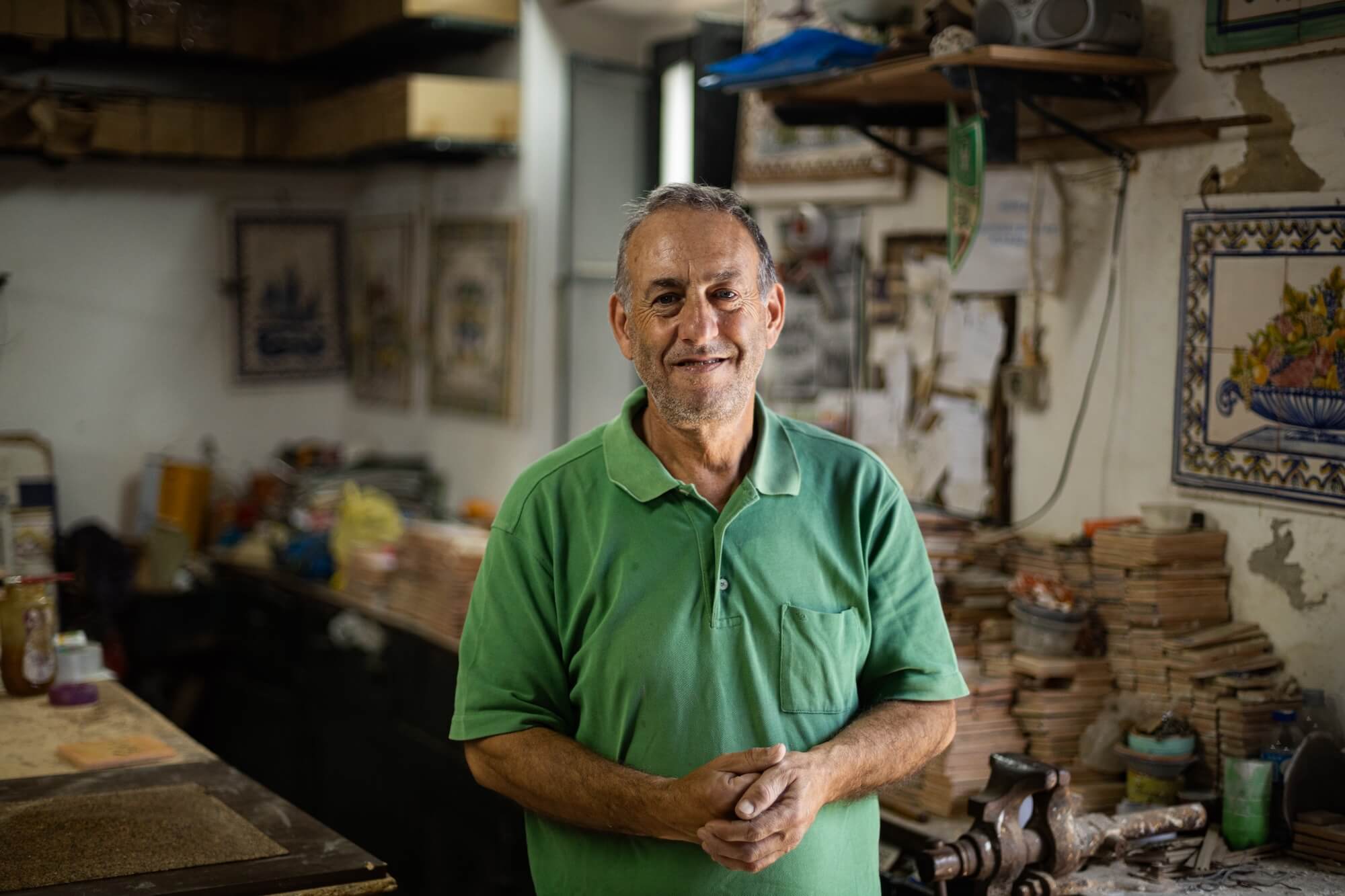
The classes are arranged in collaboration with São Simão Arte owned by the Avillez family, a renowned workshop that perpetuates the centuries-old techniques of azulejo making which we got to try ourselves at the direction of Carlos Filipe. Participants of the class are given the unique chance to visit the famed tile studio, where they can learn about the history of these exquisite tiles, witness artisans at work, and delve into the meticulous process that goes into crafting each piece. The workshop typically culminates in the exciting opportunity for participants to paint their own tiles.
Things to do in Lisbon
Miradouro de São Pedro de Alcântara
Located right in front of our hotel was the Miradouro de São Pedro de Alcântara, a must-see viewpoint in Lisbon that provides expansive views of the city from its vantage point next to the top of the Elevador da Glória. It is recognised as one of the largest and most iconic observation spots within Lisbon. The garden at Miradouro de São Pedro de Alcântara, fashioned in the 18th century, displays a classical design that includes symmetric paths, decorative fountains, and statues, enhancing its appeal as a landmark. Located in a strategic position, from here, visitors can enjoy uninterrupted views that cover significant parts of the city, including the Avenida da Liberdade, Restauradores, Baixa, as well as the Castelo de São Jorge along with its notable walls. Moreover, the garden features a striking Baroque fountain that once belonged to the Palácio da Bemposta before it was moved to this location, adding a piece of history to its already rich context. If you are looking to pick up some local art while on your trip, be sure to check out the work of Anne Laidam, who often has her art setup at this location.
Carmo Convent
The Carmo Convent, formally known as the Convent of Our Lady of Mount Carmel, is a historical landmark located in the heart of Lisbon. This former Roman Catholic convent was founded in 1389 by the Portuguese knight Nuno Álvares Pereira. Its most distinctive feature is its roofless nave that stands as a poignant reminder of the devastating 1755 Lisbon earthquake, and subsequent fire, which left the convent in ruins.
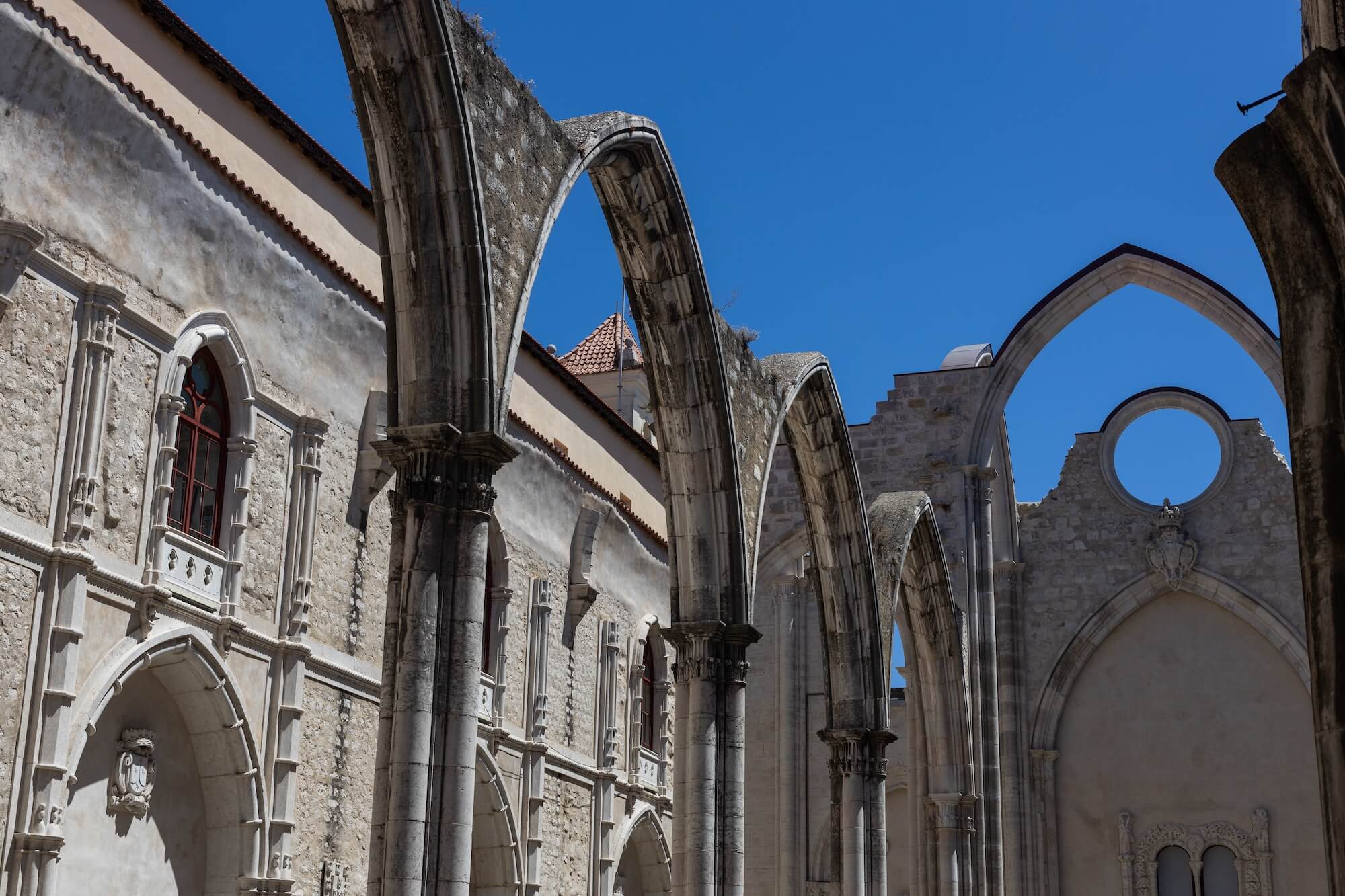
Today, visitors to the Carmo Convent can explore its gothic architecture, including arches and columns that still stand against the Lisbon sky. The vast open space within its walls now houses the Carmo Archaeological Museum, which contains an assortment of artifacts that span from the Roman to the Middle Ages, including tombstones, statues, and ceramics. The museum also showcases remnants from Portuguese history, such as items from the prehistoric and Moorish periods, all the way through to the 18th century.
There is also a great historical video set inside the building that is designed to work with the shape of the walls and the structure of the building to tell the story of its history. The audio/visual presentation is in both Portuguese and English and is a stunning telling of history.
Santa Justa Lift
The Santa Justa Lift, also known as the Elevador de Santa Justa, is a remarkable structure located in the heart of Lisbon. Built in 1902, this elevator was designed by the Portuguese engineer Raoul Mesnier du Ponsard, who was an apprentice of Gustave Eiffel, contributing to its distinctive neogothic design that stands out amidst Lisbon’s traditional architecture.
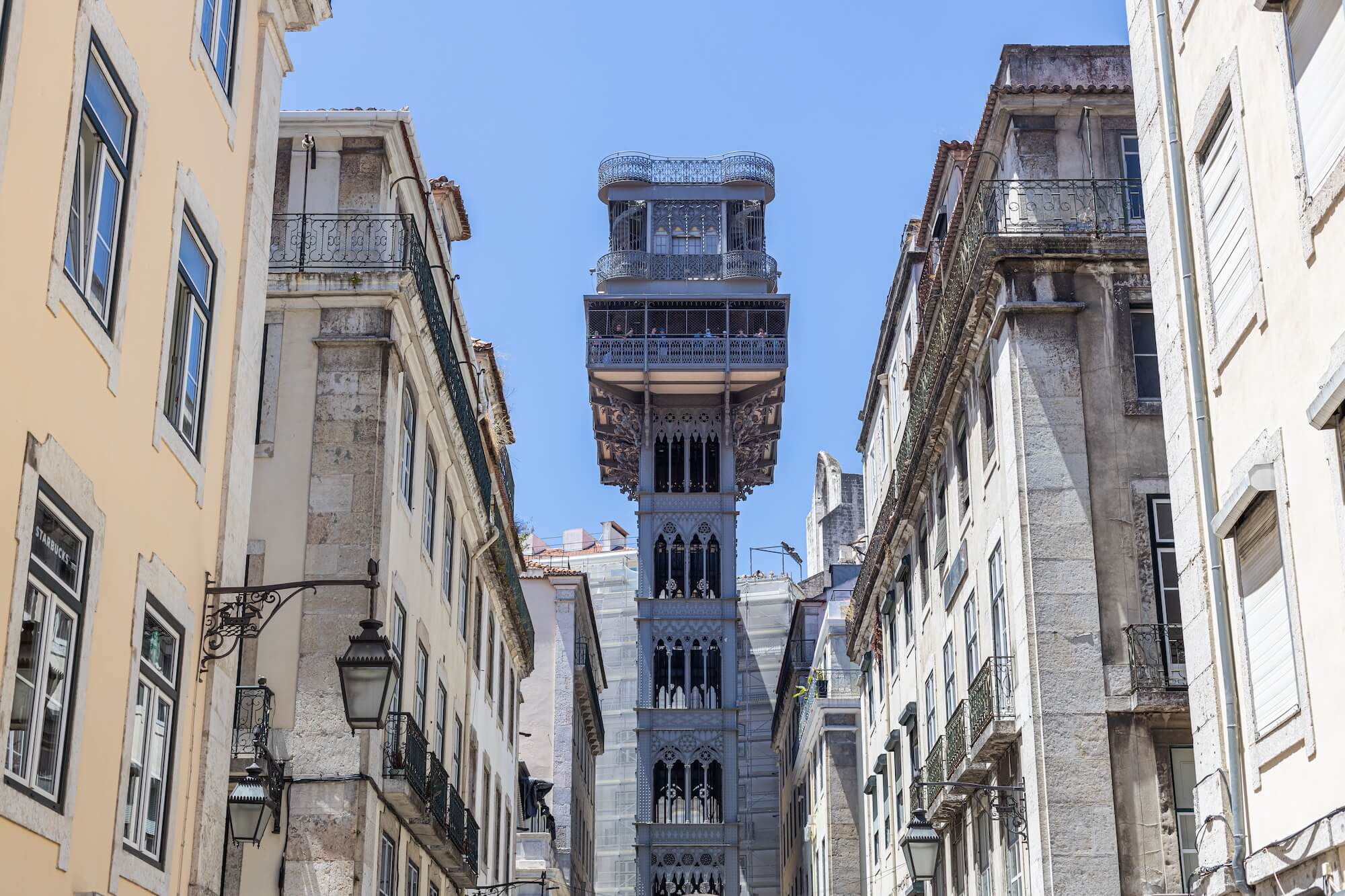
The lift serves a practical purpose by connecting the lower streets of the Baixa neighbourhood with the higher Largo do Carmo (Carmo Square), hence it was originally powered by steam and was later converted to electrical operation in 1907. The structure rises to a height of 45 metres and is adorned with intricate neo-gothic arches and geometric patterns, making it not only a valuable mode of transportation but also an architectural gem.
The top of the elevator offers a viewing platform providing visitors with breathtaking panoramic views of Lisbon, including the Rossio Square, the Baixa district, and the castle of São Jorge. The lift accommodates up to 29 passengers and remains one of the most popular tourist attractions in Lisbon, illustrating the city’s blend of historical preservation and modernisation.
Arco da Rua Augusta
The Arco da Rua Augusta is an impressive triumphal arch located at the northern end of the Praça do Comércio. It was designed as a symbol of the city’s resilience following the 1755 earthquake, which caused widespread destruction. Construction on the arch began after the earthquake but was only completed in 1873. The arch is adorned with statues of historical figures, including Vasco da Gama and the Marquis of Pombal, who were instrumental in Portugal’s Age of Discovery and the rebuilding of Lisbon, respectively.
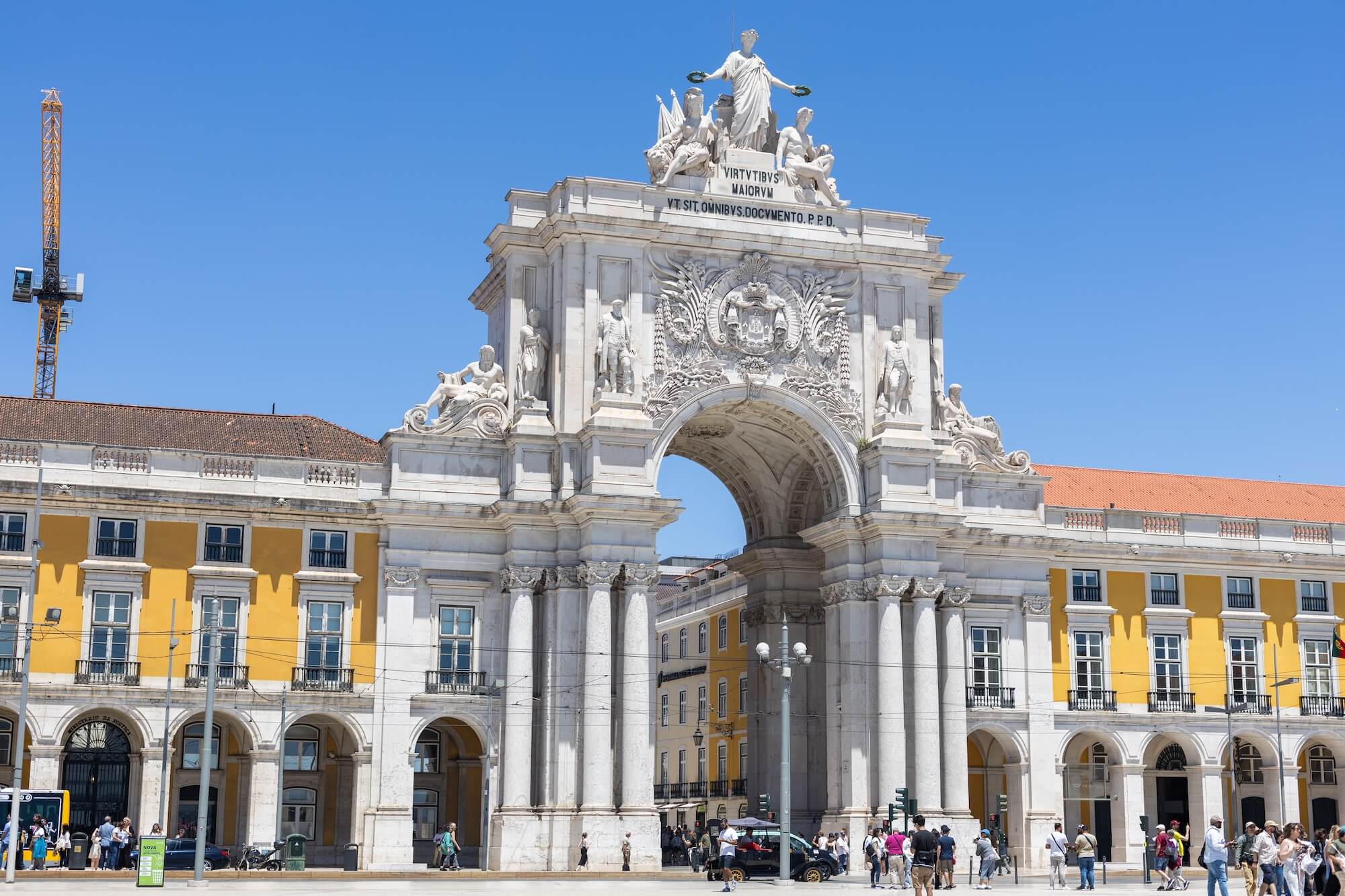
Visitors can access a viewing platform at the top of the arch, which provides panoramic views of the surrounding area, including the Praça do Comércio, the Tagus River, and the pedestrianized Rua Augusta. The Arco da Rua Augusta stands as an iconic symbol of Lisbon’s history and is a popular spot for both tourists and locals to capture the essence of the city.
Castelo de São Jorge
The Castelo de São Jorge, perched atop one of the highest hills in Lisbon, is a monumental castle with a commanding view over the historic centre of Portugal’s capital and the Tagus River. Its origins can be traced back to the 11th century when Moors fortified the existing citadel. The castle is named after Saint George, the patron saint of knighthood, thanks to a 14th-century decision by King John I, who aligned his rule with the saint’s ideals of chivalry.
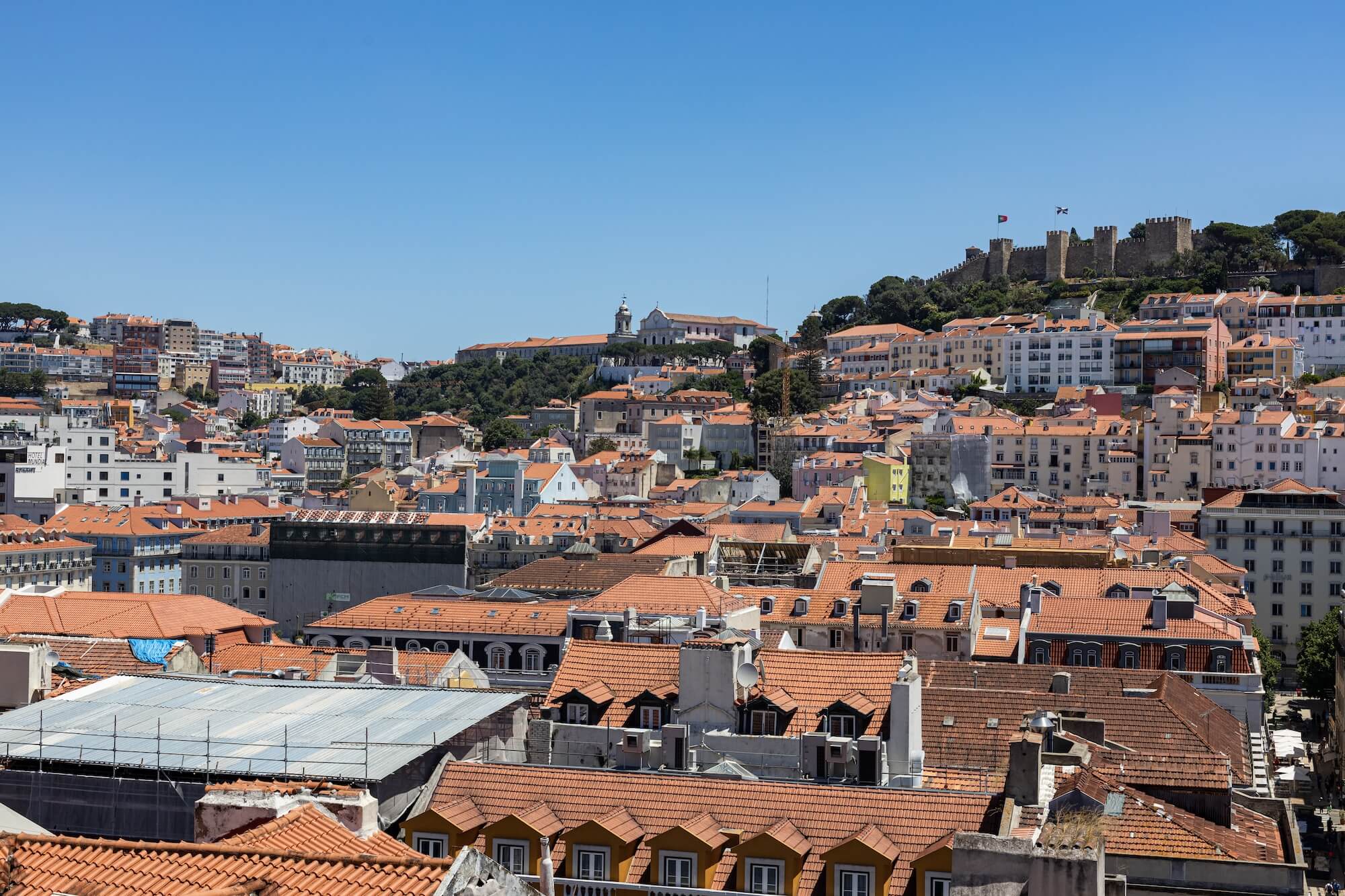
After the Christian reconquest in 1147, Portuguese kings turned the fortress into a royal palace, and it remained a symbol of royal power for centuries. Throughout history, the Castelo de São Jorge has served as a military barracks, a royal residence, and, following a period of neglect, it was revitalised as a national monument.
Visitors to the Castelo de São Jorge can stroll along its ancient walls, explore its courtyards and towers, and take in the sweeping panoramic views that stretch across Lisbon and beyond. The castle features eleven towers, several archaeological sites with traces of past Roman, Visigothic, and Moorish layers, and a museum where artifacts found on the grounds are displayed.
25 April Bridge
The 25 de Abril Bridge is a striking suspension bridge that spans the Tagus River in Lisbon, Portugal. Completed in 1966, originally it was named the Salazar Bridge after the country’s then-dictator, António de Oliveira Salazar. However, following the Carnation Revolution on April 25, 1974, which overthrew the Estado Novo regime, the bridge was renamed to commemorate this significant date in Portuguese history.
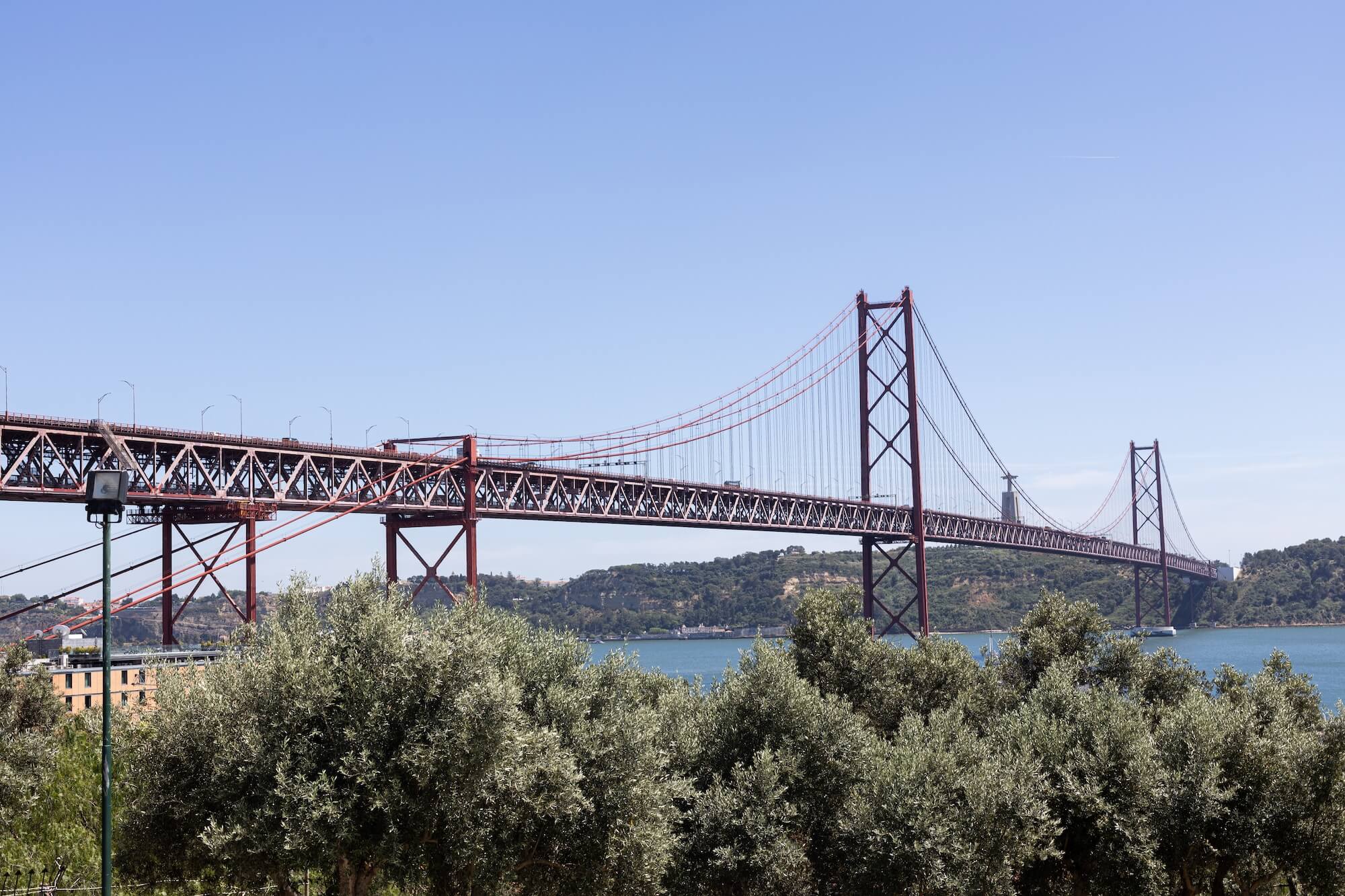
The bridge’s design is often compared to San Francisco’s Golden Gate Bridge due to its similar colour and style. Its total length of 2.277 kilometres (about 1.4 miles) makes it one of the longest suspension bridges in Europe. The structure supports a dual deck: the upper deck carries six lanes of vehicle traffic, while the lower deck was added in 1999 to accommodate a rail line.
Built by the American Bridge Company, which also constructed the San Francisco-Oakland Bay Bridge (but not the Golden Gate), the bridge features a distinctive deep orange-red color and sweeping cables. It is a prominent feature of the Lisbon skyline and offers dramatic views of the capital and the Atlantic Ocean beyond.
MAAT
The MAAT (Museum of Art, Architecture, and Technology) is a contemporary art museum located in the Belém district of Lisbon. Opening its doors in October 2016, the museum quickly established itself as a key cultural and architectural landmark in the city. The MAAT aims to foster critical thinking and dialogue surrounding the themes of art, architecture, and technology through its diverse exhibitions and public programs.
Designed by the British architect Amanda Levete, the museum’s building is a testament to modern design, featuring a futuristic and organic facade that mirrors the flow of the Tagus River beside it. The structure is characterized by its unique, undulating shape, covered in thousands of three-dimensional ceramic tiles that reflect the sunlight and the river’s movements. This design creates a dynamic interaction between the museum and its natural surroundings.
One of the most striking features of the MAAT is its accessible roof, which serves as a public space offering panoramic views of the river and the city. The museum’s layout encourages a fluid movement, inviting visitors to explore the interconnected exhibition spaces that host a mix of permanent and temporary exhibitions by Portuguese and international artists.
Padrão dos Descobrimentos
The Padrão dos Descobrimentos, or Monument of the Discoveries, stands prominently in the Belém district as a tribute to the Portuguese Age of Discovery during the 15th and 16th centuries. This monument celebrates the explorers who embarked on voyages across uncharted seas to discover new lands. Its construction is positioned along the Tagus River, symbolising the departure point of many exploratory ships.
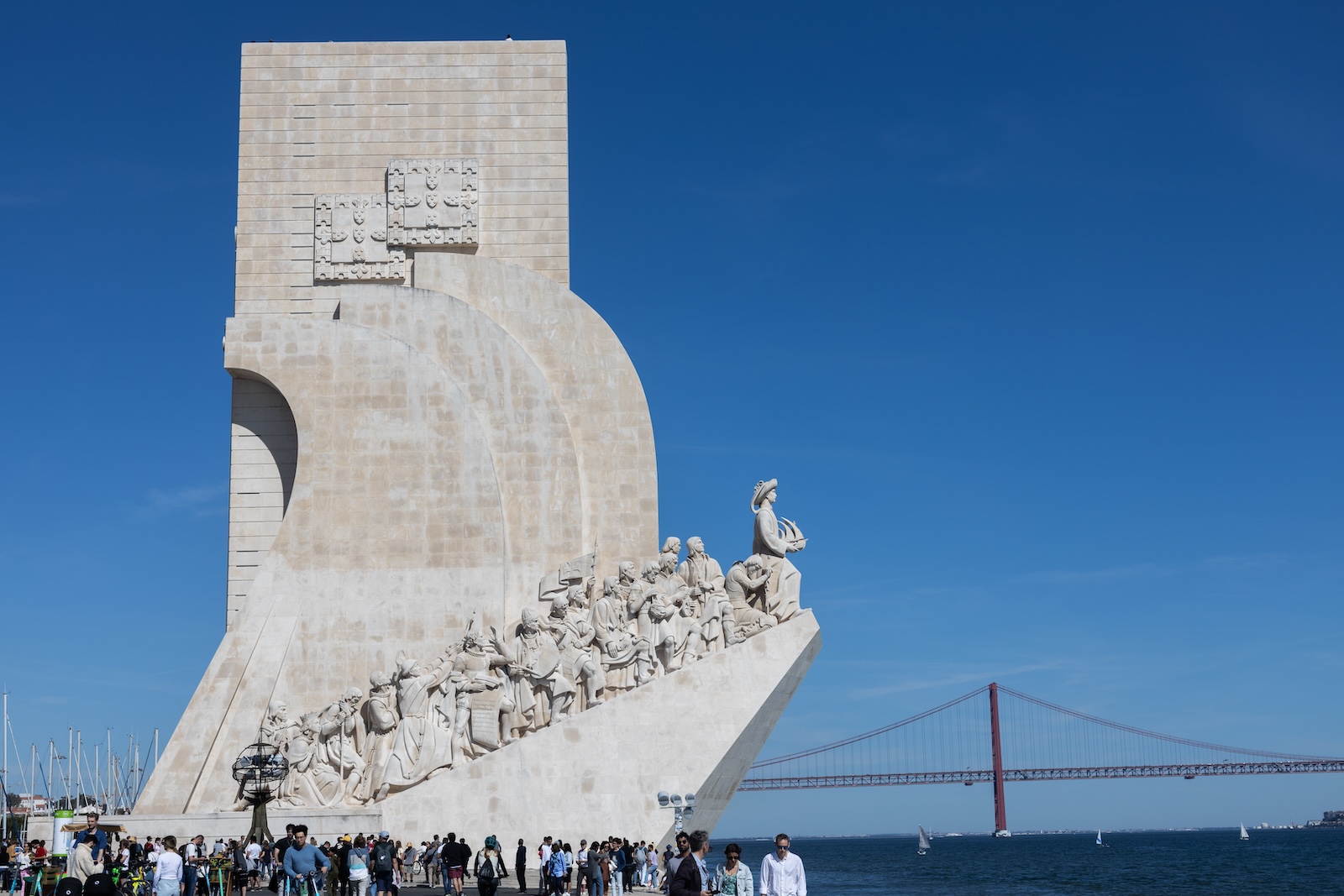
Designed by the architect Cottinelli Telmo and sculptor Leopoldo de Almeida, the Monument to the Discoveries was initially erected in 1940 for the Portuguese World Exhibition. It commemorates important figures in the Portuguese Age of Discovery, prominently featuring Prince Henry the Navigator, who is depicted at the prow of the ship-like structure. The monument, as it stands today, was rebuilt in 1960 in its permanent form, made of concrete and stone, and is shaped like the prow of a caravel, with Prince Henry leading a line of important historical figures such as explorers, monarchs, cartographers, and scientists, significant to the Portuguese explorations.
Visitors can explore an exhibition space inside the monument that hosts temporary exhibitions related to the history of Portugal’s discoveries. One of the highlights of a visit to the Padrão dos Descobrimentos is the opportunity to ascend to the viewing platform at the top of the structure, offering expansive views over the Tagus River, the Belém district, and several landmarks associated with the Age of Discovery, such as the Jerónimos Monastery and the Tower of Belém. Below the monument lies a large compass rose and a world map, gifted by the Republic of South Africa, illustrating the various routes taken by the Portuguese explorers, further emphasising Portugal’s maritime achievements.
Torre de Belém (Belém Tower)
The Torre de Belém, or Belém Tower, situated in the historic district of Belém, is a fortified tower that has become one of the country’s most iconic landmarks and a symbol of the Age of Discoveries. Built between 1514 and 1520 during the reign of King Manuel I of Portugal, the tower served multiple purposes throughout its history, including acting as a fortress, a customs checkpoint, and a lighthouse, as well as a ceremonial gateway to Lisbon.
Designed by the military architect Francisco de Arruda, the Tower of Belém is notable for its ornate Manueline architectural style, which incorporates motifs of the discoveries, including carved armillary spheres, crosses of the Order of Christ, and elements resembling ropes and exotic animals. This distinctive style celebrates Portugal’s maritime achievements and reflects the wealth and power of the Portuguese empire during the 16th century.
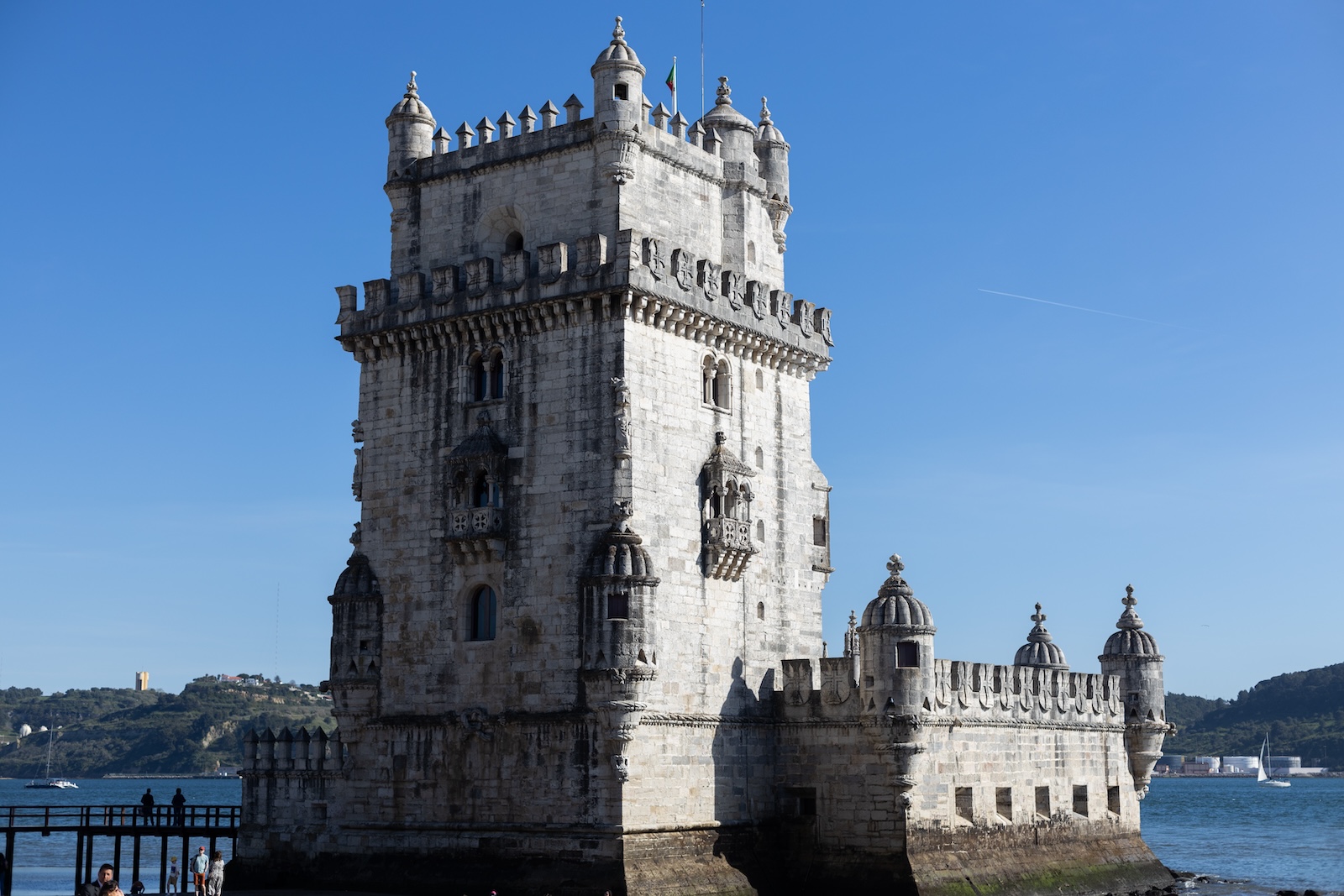
Standing at the mouth of the Tagus River, the structure originally occupied a position on a small island close to the Lisbon shoreline, effectively guarding the entrance to the city from potential invaders. Over the years, the course of the river has shifted, making the tower now easily accessible from the riverbank.
Visitors to the Torre de Belém are greeted by its imposing exterior, which features a bastion connected to the four-story tower. Beyond its defensive purpose, the tower is adorned with decorative elements that enhance its beauty and historical significance. The interior of the tower reveals spaces that once served as barracks, storerooms, and dungeons, with the Governor’s Hall, the Kings’ Hall, and the Chapel being of particular interest for their historical and architectural value.
The tower’s rooftop terrace offers panoramic views of the Tagus River and the surrounding area, making it a popular spot for tourists. In 1983, UNESCO recognised the Tower of Belém, along with the nearby Jerónimos Monastery, as a World Heritage Site, affirming its importance as a masterpiece of Portuguese architectural heritage and a reminder of the country’s exploratory legacy.
Festivities of Saint Anthony
The Festivities of Saint Anthony in June, particularly vibrant in Lisbon, are an integral representation of Portugal’s rich cultural and religious traditions. Known locally as the Festas dos Santos Populares (Festival of the Popular Saints), this celebration is distinguished by honouring Saint Anthony of Lisbon, also known as Saint Anthony of Padua. Though the festivities recognize a series of saints’ days throughout June, Saint Anthony’s Day on June 13th is the focal point in Lisbon, owing to his status as the city’s patron saint.
The festival is marked by an array of traditions and events that create a lively, communal atmosphere in the city. One of the most emblematic traditions is the parades of marchas populares, where neighbourhoods compete in processions featuring elaborate costumes and choreographies. The streets come alive with decorations, particularly with arches, balloons, and streamers, transforming the city into a buzzing hub of activity.

Culinary traditions also play a significant role in the festivities, with sardines being the star. Grilled sardines served on bread or a plate, accompanied by a side of salad and grilled peppers, become the ubiquitous dish in local restaurants and makeshift street barbecues. The scent of grilled sardines fills the air throughout Lisbon’s neighbourhoods, inviting both locals and tourists to partake in this gastronomic delight.
Moreover, the festival is synonymous with the celebration of love and affection. It is common for people to celebrate Saint Anthony not only as the patron saint of Lisbon but also as the matchmaker saint. The tradition of offering small pots of basil with a love poem to someone you care about is a distinctive feature of these festivities. June weddings, known as “Santo António’s brides,” are also promoted by the Lisbon City Council to help couples who wish to marry but cannot afford it.
Sintra
Pena Palace
Nestled atop the lush hills of the Sintra Mountains, the Pena Palace (Palácio da Pena) stands as a testament to the imagination and ingenuity of 19th-century Romanticism in Portugal. This architectural marvel, with its vivid colours and eclectic fusion of Moorish, Manueline, and Gothic elements, captures the eye and the imagination of all who visit. Commissioned by King Consort Ferdinand II, the palace was built on the ruins of a medieval monastery as a summer residence for the Portuguese royal family. It is now one of the most iconic symbols of Sintra, a UNESCO World Heritage Site known for its dense woodlands, enigmatic palaces, and breathtaking vistas. Be sure to use a Tuk-Tuk once you arrive to the region to get around as they are a lot easier and cheaper than many other options.
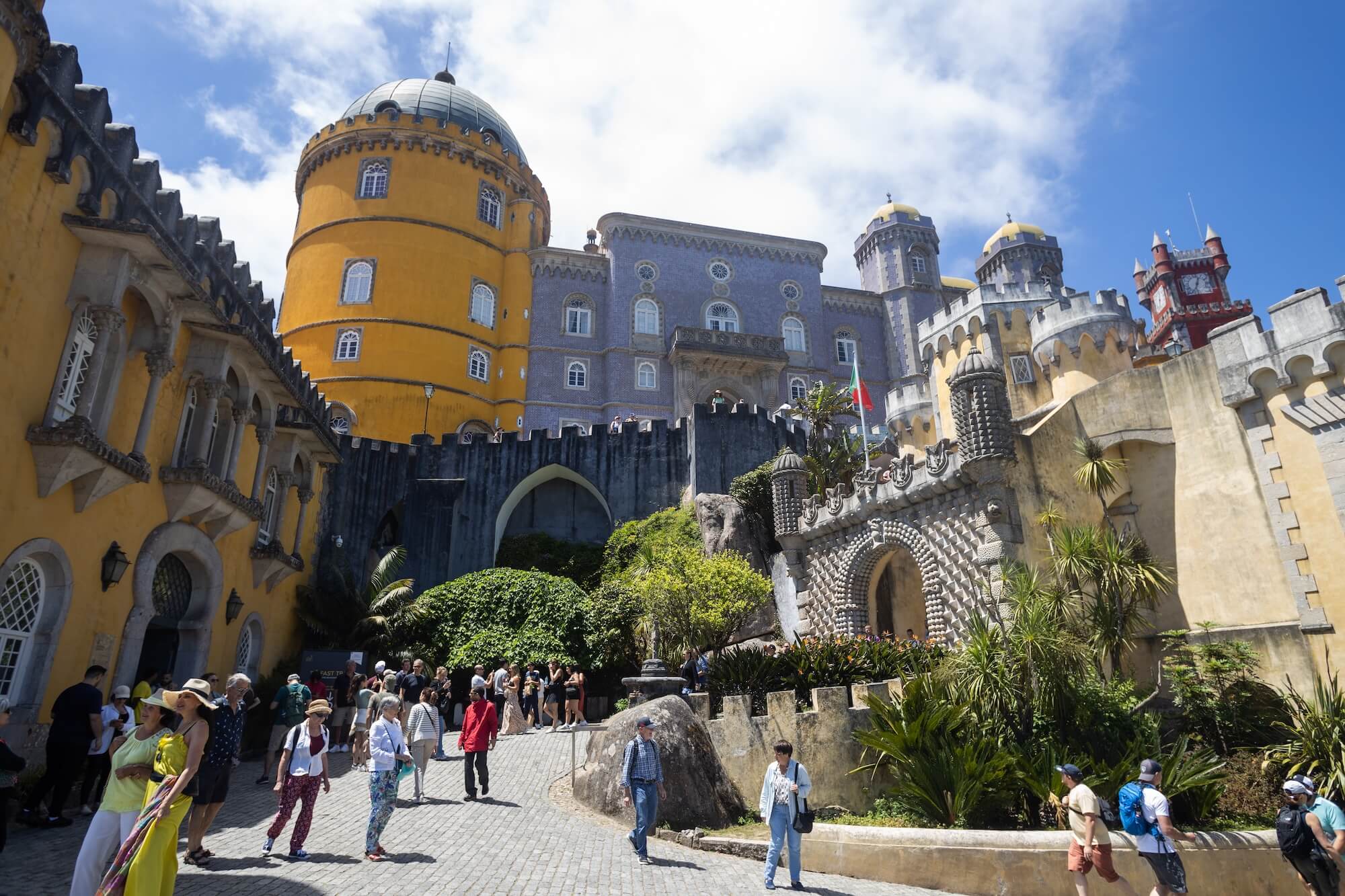
From its lofty perch, Pena Palace offers panoramic views of the surrounding countryside extending to the Atlantic Ocean, a spectacle that is as captivating as the palace itself. The exterior, painted in vibrant yellows, reds, and blues, is adorned with ornate carvings, decorative tiles, and mythological statues that accentuate its fairy-tale ambiance. Each feature of the palace tells a story, from the Triton Gate, symbolizing the creation of the world, to the cloisters that retain their original 16th-century Manueline-style detailing.
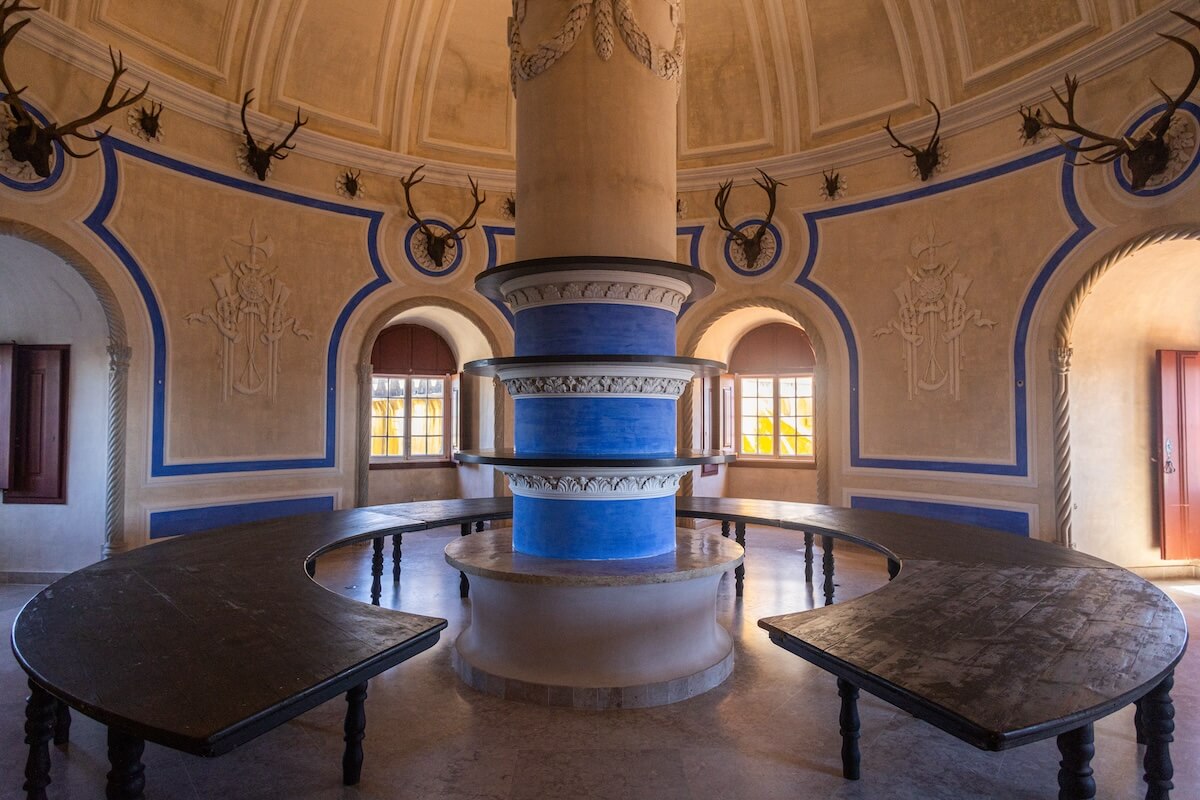
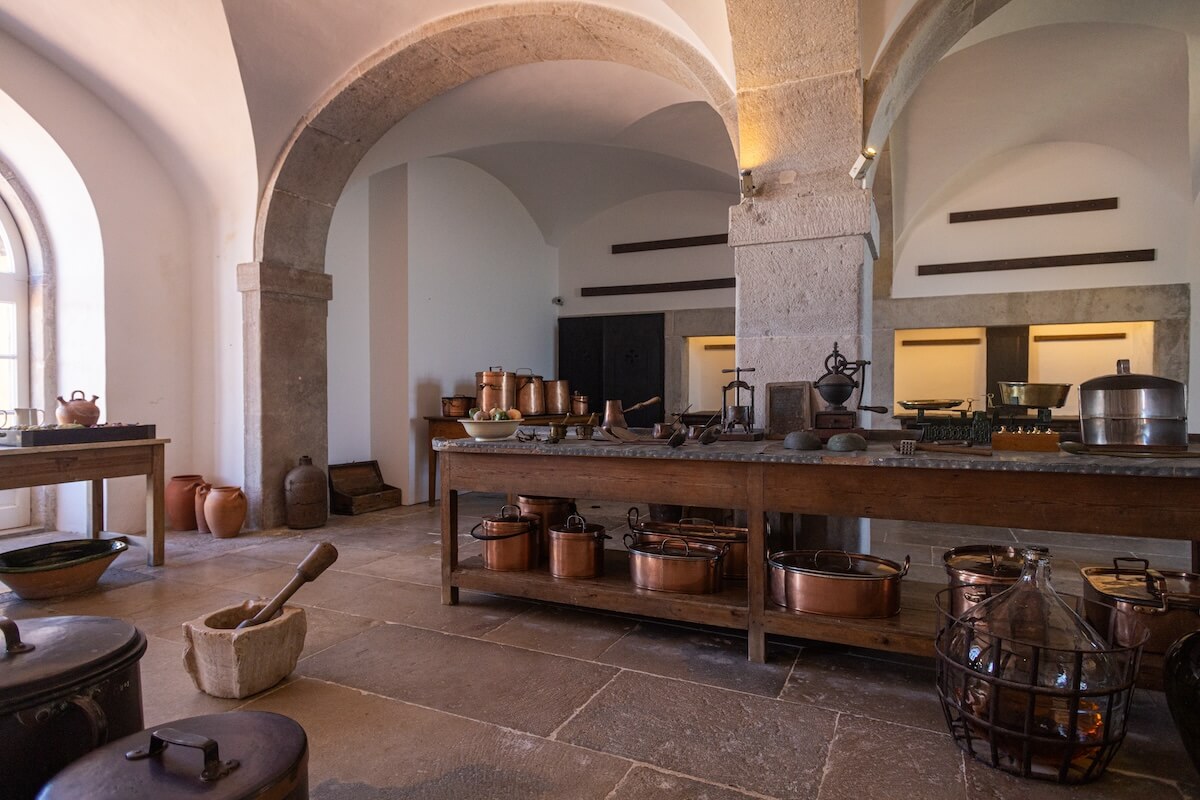
The interior of Pena Palace is equally impressive, with its meticulously restored rooms providing a glimpse into 19th-century royal life. The rooms are adorned with period furniture, paintings, and decorative arts, each contributing to the narrative of the palace’s glorious past. The Arab Room, with its intricately designed walls and ceilings, and the Queen’s Terrace, offering spectacular views of the Pena Park and beyond, are highlights of the tour.
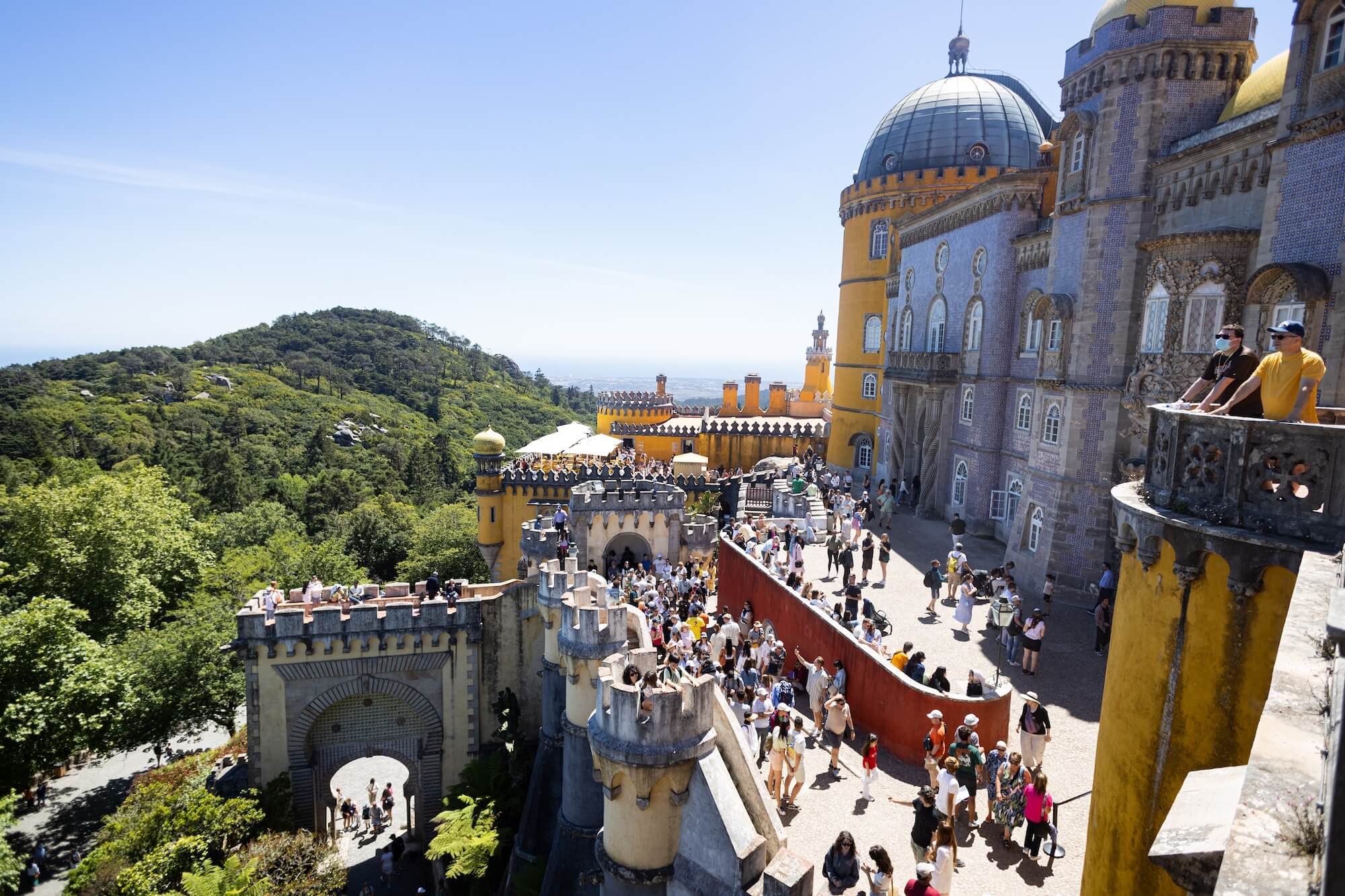
The surrounding Pena Park is a vast and enchanting forest, designed by King Ferdinand to include a multitude of exotic trees and plants collected from various parts of the world. Hidden among the foliage are whimsical pavilions, serene lakes, and winding paths that invite exploration and contemplation. The park, much like the palace, is a place of discovery, blending nature and design to create a magical landscape that enhances the mystical aura of Pena Palace.
Moorish Castle
Perched high above the historic town of Sintra, the Moorish Castle, or Castelo dos Mouros, is a monument that captivates the imagination with its extensive fortifications, ancient ruins, and breathtaking views. Constructed in the 8th and 9th centuries by the Moors who ruled over much of the Iberian Peninsula, this hilltop medieval castle was built as a strategic military point, which, during its height, played a crucial role in the defence of the region. It stands as a symbol of the Islamic period in Portuguese history and reflects the diverse cultural heritage of Sintra.

The castle’s strategic significance continued through the centuries, especially during the Reconquista, when it was taken by Christian forces after the fall of Lisbon. Despite its military importance waning over time, the Castle of the Moors underwent significant archaeological excavations since 1976, revealing its complex history and many inhabitants over the ages. In 1995, the cultural landscape of Sintra, including the Moorish Castle, was classified as a World Heritage Site by UNESCO, underscoring its global significance and the need for its preservation.
Today, visitors to the Moorish Castle can explore its vast ramparts, which offer panoramic views of the surrounding Sintra hills and the Atlantic Ocean. The experience of wandering through the castle’s ruins is a journey through time, providing a tangible link to the past and a deeper understanding of the region’s history. The Castle of the Moors not only serves as a reminder of Portugal’s Moorish legacy but also stands as a beacon of cultural unity, representing the layers of history and diverse civilisations that have shaped the nation
Quinta da Regaleira
Quinta da Regaleira, located in the mystic hills of Sintra, Portugal, is an estate that intoxicates the senses and evokes a world where fantasy and reality blur. At the heart of this enchanting property lies the Initiation Well (Poço Iniciático), a subterranean tower that sinks 27 meters (about 88 feet) into the earth, designed for ceremonial purposes including Tarot initiation rites. This well is more akin to a subterranean tower lined with a spiral staircase, supported by carved columns that lead down into the darkness of the earth, where at the bottom, a compass rose over a Knights Templar cross is engraved, pointing to the mysticism and esoteric symbolism that permeates the place.
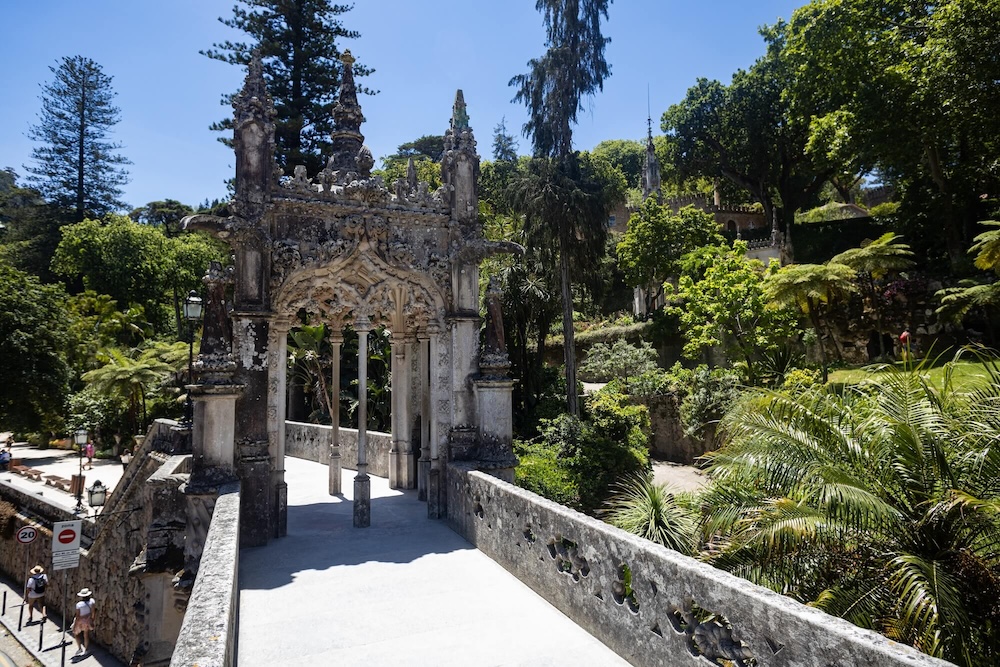
Created by the millionaire António Augusto Carvalho Monteiro (a prominent figure known for his interest in the mystic, alchemy, and the Freemasonry) with the architectural genius of Luigi Manini, Quinta da Regaleira is a masterpiece of Romanticism. The estate amalgamates Gothic, Egyptian, Moorish, and Renaissance influences, woven together in a tapestry of architectural and landscaping marvel, built between 1904 and 1910.
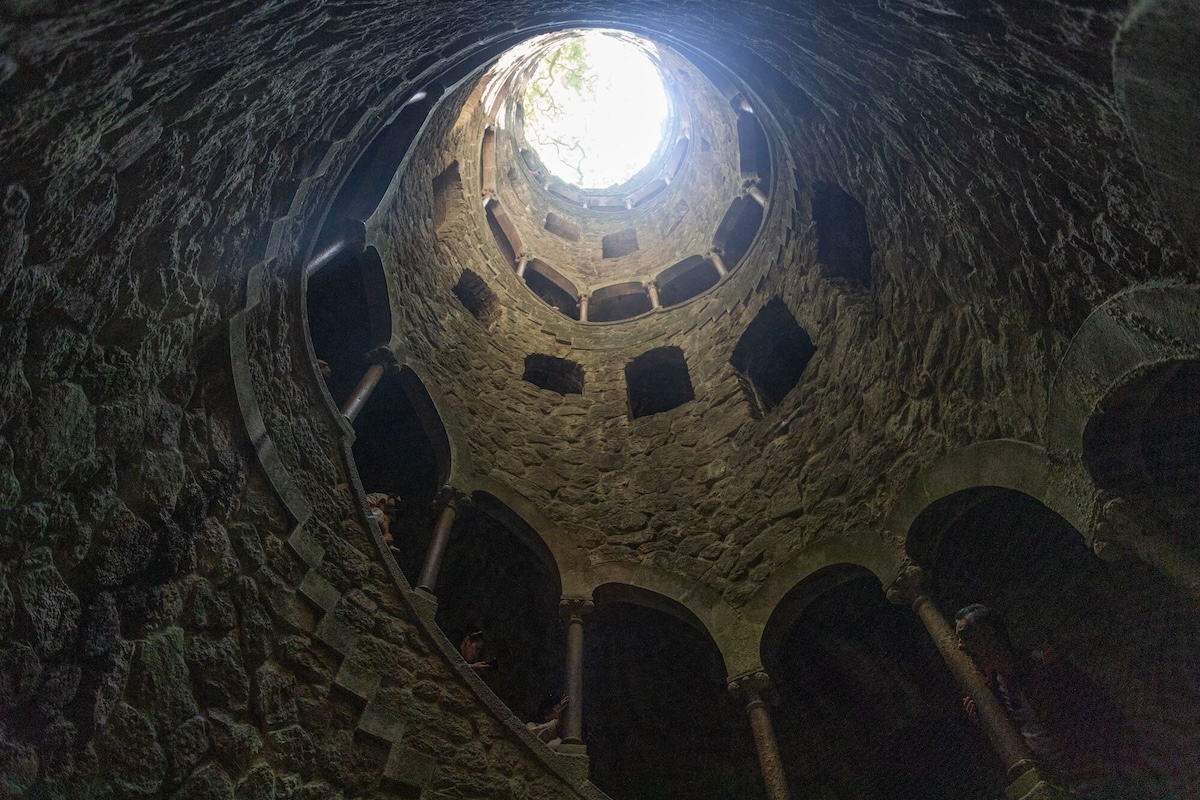
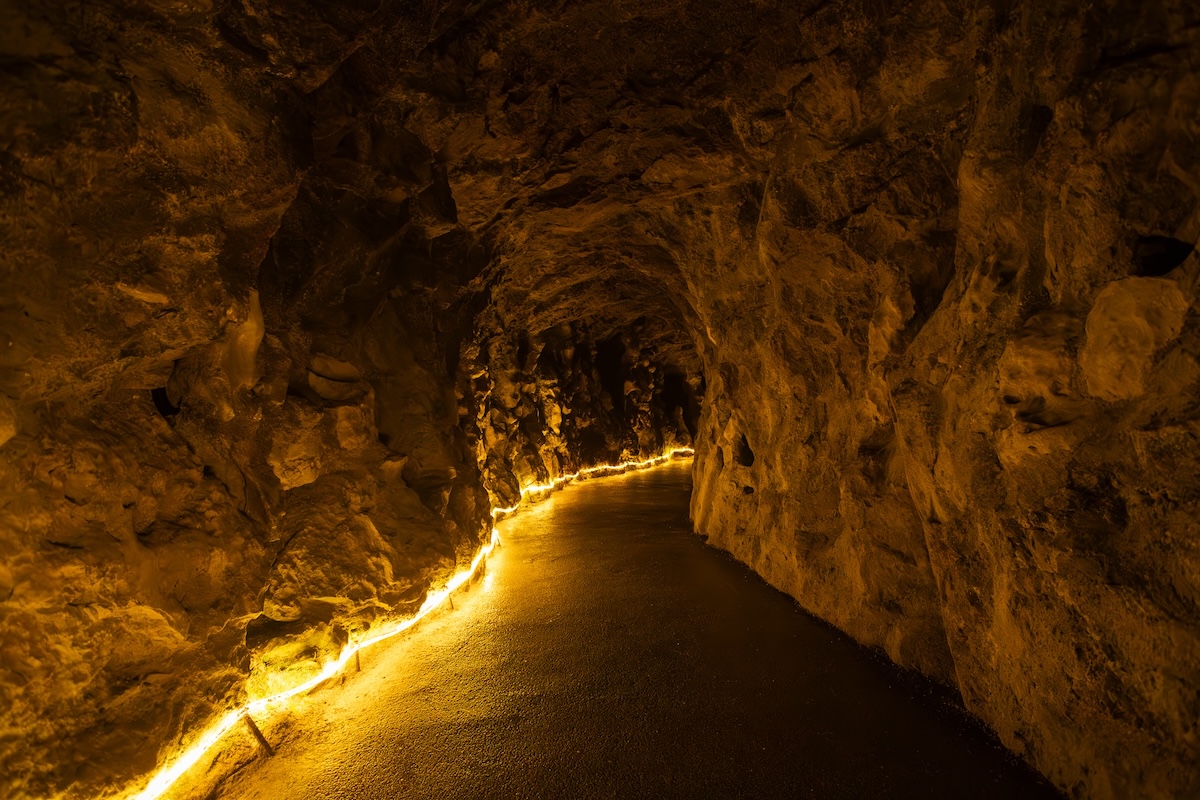
Surrounding the Initiation Well, the park of Quinta da Regaleira is a labyrinth of gardens, lakes, grottoes, and enigmatic constructions with hidden meanings and alchemical references. The park is designed to represent a microcosm of the spiritual world, guiding visitors through a symbolic journey of initiation. From the Regaleira Chapel, with its exquisitely frescoed interiors and symbolic depictions, to the enigmatic system of tunnels that connect the various landmarks of the estate, every element in Quinta da Regaleira is imbued with mystery and intrigue.
Where to eat in Lisbon
Four Seasons – CURA
Elevating the dining experience to an art form, CURA at the Four Seasons Hotel is more than just a restaurant—it’s a symphony of culinary excellence and innovation. Under the watchful eye of Executive Chef Pedro Pena Bastos, it recently garnered a Michelin Star in 2023, a testament to its unparalleled gastronomic offerings that fuse traditional flavours with the boldness of modern cuisine. The dining experience is meticulously curated into what CURA describes as either “10 moments,” or “5 moments” menu that includes an option for wine pairing or an innovative soft pairing featuring house-made juices and kombucha, catering to the tastes of every guest. Each drink, from the sparkling rose wine to the dry white port, is carefully chosen not just to accompany, but to enhance each dish, served in perfect quantities designed to delight the palate without overwhelming it. We were delighted by their 10 moments with wine pairings.
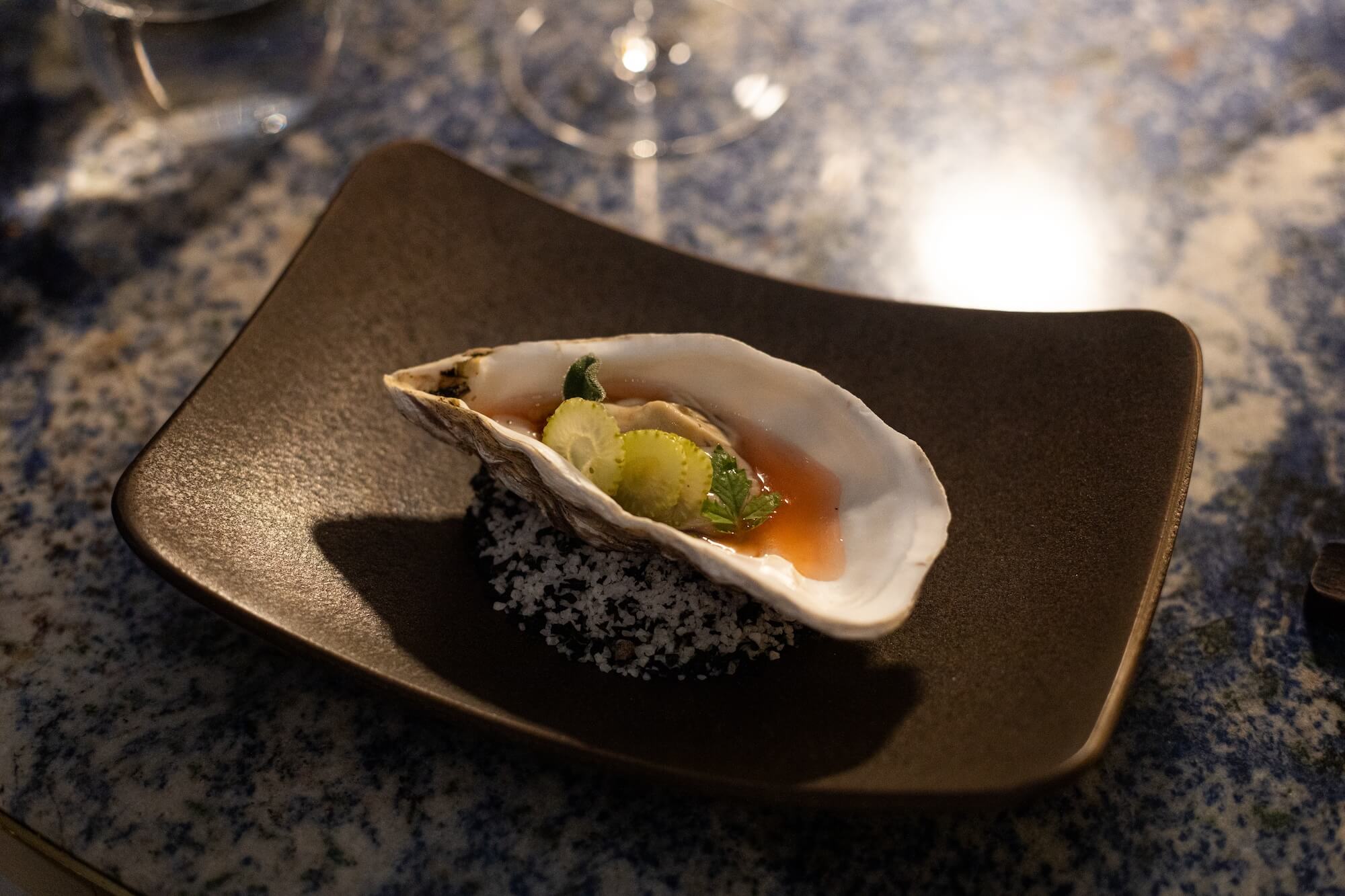
The journey through CURA’s menu is an adventure in taste and sophistication. Starters like the avant-garde tartlet, smoked eel on a bed of fennel, and parsnips served on dehydrated seaweed set the stage for a culinary voyage. The attention to detail extends to the serving ware and even the choice of cutlery, with expertly placed utensils tailored to each diner’s preference. Signature dishes such as the creamy chickpea with codfish topped with shrimp and fingerlime, and the squid with hazelnuts and caviar, showcase CURA’s commitment to celebrating the richness of Portuguese cuisine through innovative approaches and exquisite plating.
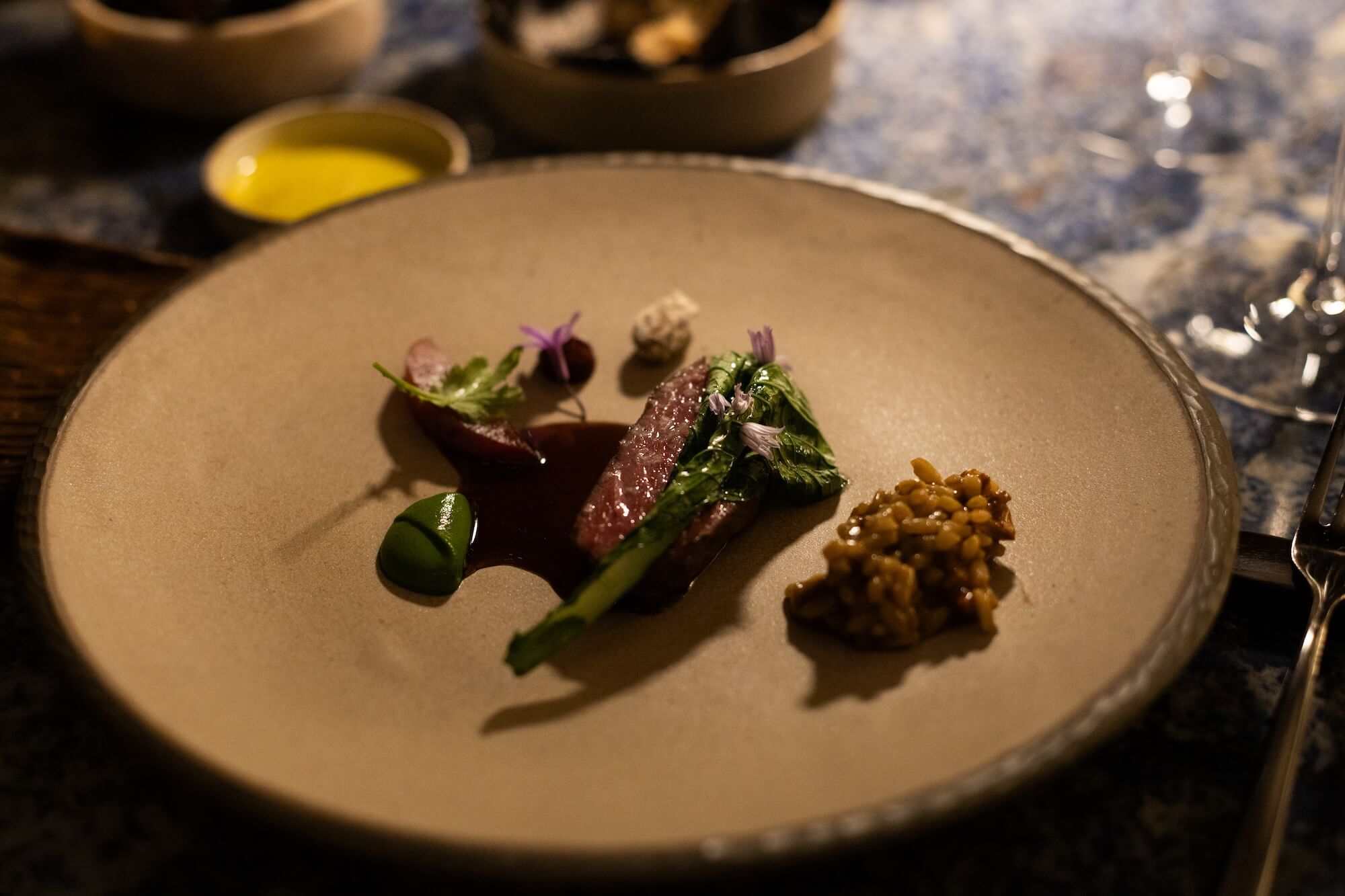
Bread, an essential element of Portuguese dining tradition, is given its own moment, featuring selections like sourdough and milk bread finished with garlic butter, accompanied by aged butter from Mosoros Island and green olive oil—a nod to the simplicity and purity of the flavours.
The main courses moments further exemplify CURA’s culinary philosophy, with offerings like turbot paired with asparagus, wild shallots, and garlic sauce, and Iberian Pork complemented by chanterelles mushroom rice and plum in port wine, embodying the restaurant’s knack for redefining traditional dishes with a contemporary flair.
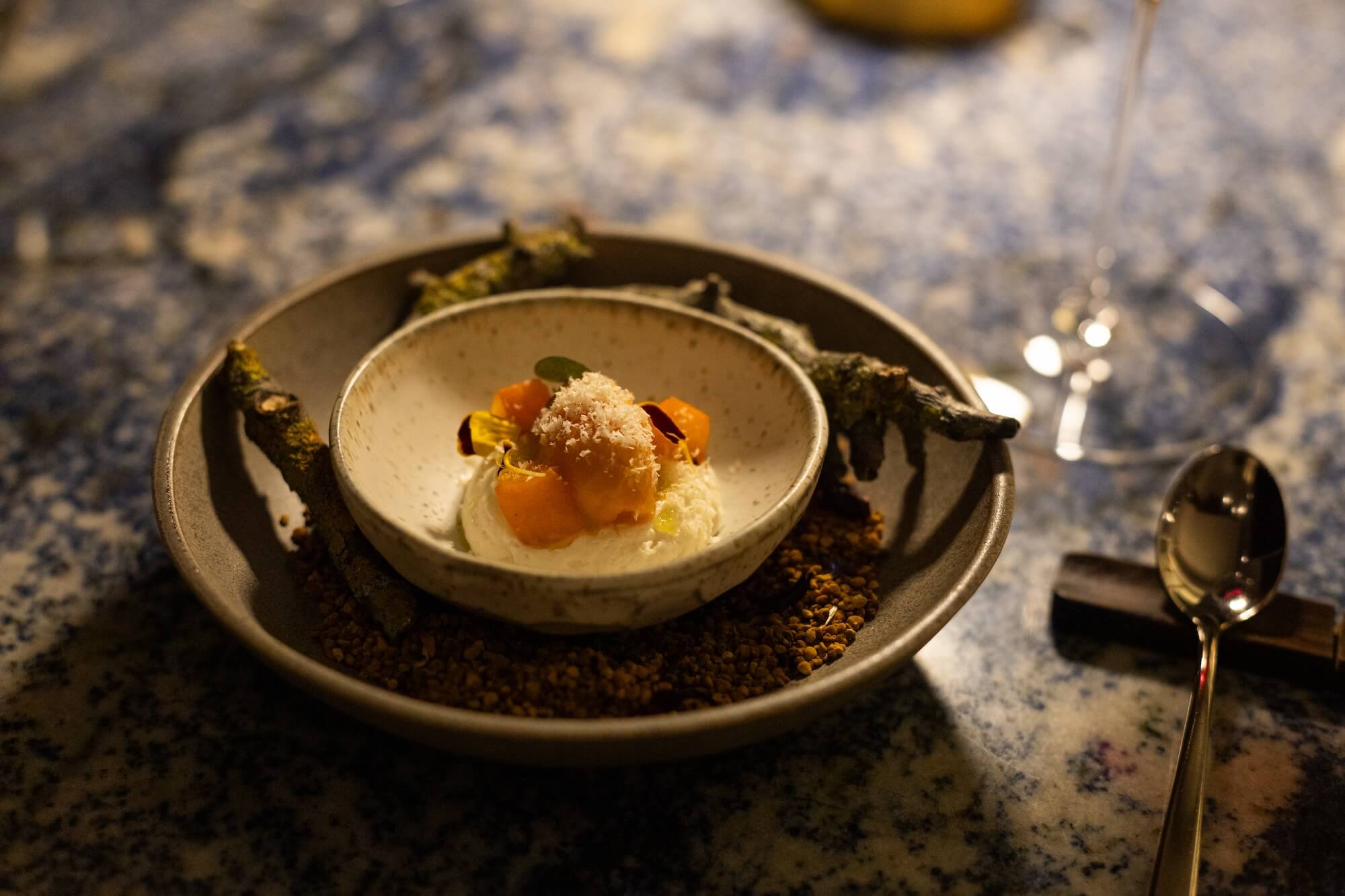
Finishing with their dessert moments, a testament to the restaurant’s creativity. We were lucky enough to experience all three options. Dishes such as the lemon grass syrup with apricot and Indian cress sorbet, or the uniquely intriguing sourdough ice cream topped with bread molasses, round off the dining experience, leaving guests with a lingering taste of CURA’s innovative spirit.
Embarking on a dining experience at CURA is not just about enjoying meals; it’s about participating in a gastronomic journey that celebrates the finesse of contemporary dining while staying rooted in the rich tapestry of Portuguese culinary traditions. The team at CURA ensures that each guest’s visit is memorable, from the attentive service to the journey through a menu that is both a tribute to and an exploration of the very essence of flavour.
Pastéis de Nata
Pastéis de Nata, also known as Portuguese custard tarts, are one of Portugal’s most famous and beloved pastries. Their history is intriguing, dating back centuries, with their origin linked to the Jerónimos Monastery in the parish of Belém, in Lisbon. The Pastéis de Belém, closely related to Pastéis de Nata, were first created by Catholic monks at the monastery before the 18th century. Following the Liberal Revolution of 1820, all monasteries in Portugal were closed down in 1834, and the monks started selling Pastéis de Belém at a nearby sugar refinery to generate income. This recipe has been kept a secret to this day, known only by a select few, making them a unique treasure of Portuguese cuisine. The immense popularity of these tarts led to the recipe spreading beyond Belém and becoming a national favourite.
Pastéis de Nata are enjoyed worldwide, particularly in Western Europe, Asia, and former Portuguese colonies such as Brazil, Mozambique, Macau, Goa, and East Timor. Their international spread has made them a symbol of Portuguese culture and gastronomy abroad. Typically, these tarts are dusted with cinnamon and powdered sugar, appealing to a wide array of taste preferences. The Pastel de Nata offers a creamy, rich custard encased in a crisp, flaky pastry, a contrast that has won over the hearts and palates of many.
Garrafeira Nacional
The Garrafeira Nacional stands as a distinguished emblem within Portugal’s enological and cultural landscape, with a history that weaves through the very fabric of Lisbon’s commercial and social narratives. Founded in 1927, it has established itself not merely as a wine shop but as a repository of Portugal’s rich and diverse wine heritage, offering an unparalleled selection of wines, spirits, and liqueurs sourced from across Portugal and beyond.
Nestled in the heart of Lisbon, the Garrafeira Nacional has been a beacon for wine enthusiasts, collectors, and connoisseurs for nearly a century. Its inception was borne out of a passion for quality and a vision to cater to the most discerning palates, offering everything from accessible table wines to rare vintage ports. The store’s historical significance is matched by its commitment to preserving and promoting the tradition and artistry of Portuguese winemaking.
The Garrafeira Nacional’s inventory reflects not just the breadth of Portugal’s wine regions but also the depth of its wine culture. From the vinho verdes of the North to the robust reds of the Alentejo, and from the unique Madeira wines to the legendary ports of the Douro Valley, the Garrafeira Nacional serves as a gateway to the richness of Portuguese oenology. The store is especially renowned for its impressive collection of vintage ports, some of which date back several decades, providing a rare glimpse into the history and evolution of this esteemed wine category.
Beyond its commercial success, the Garrafeira Nacional has played a crucial role in promoting wine culture in Portugal and internationally. Through tastings, events, and collaborations, it has fostered a community of wine lovers and has contributed to the global recognition of Portuguese wines. Its longevity and success have made it more than just a store; it has become a cultural institution in its own right, embodying the essence of Portuguese hospitality and the collective joy of sharing a good bottle of wine.
Burgavision
Located in a quieter part of Lisbon, where the vibrant threads of Portuguese culture intertwine with a global pulse, I stumbled upon a culinary gem that truly stands out—Burgavision. Nestled in the bustling district of Alcântara, this burger haven has quickly become a local favourite, and after my experience, it’s easy to see why.

Portuguese cuisine, with its rich tapestry of flavours and hearty emphasis on meat, sets the perfect stage for the burger scene to flourish. Burgavision, despite being a relatively new contender, having opened its doors just over a year ago, has already made a profound mark. It brings an intriguing twist to the table—a fusion of Lisbon’s culinary ethos with a dash of international flair, thanks to its founder hailing from Toronto. This blend of cultures is not just in its origins but extends to the atmosphere and menu, presenting a space where everyone, from locals to travellers, can find something to relish.
The restaurant doubles as a bar, creating a welcoming space for those looking to unwind with a drink alongside their meal. But perhaps what sets Burgavision apart are its burgers—smash burgers to be exact. Each burger is its own marvel, crafted from a unique blend of Portuguese meat, served on a fresh brioche bun.

The creativity at Burgavision doesn’t stop at the ingredients. It infuses pop culture, film, and TV into its essence, making each burger not just a meal but a story. The names of the burgers themselves are nods to popular culture, adding an element of fun and nostalgia to the dining experience. My personal favourites were the “Mactrix” and the “Oscar,” each bite taking me on a flavourful journey through time and taste.
In wrapping up our vacation that brought us to the vibrant heart of Lisbon and to the serene luxury of Hotel Casa Palmela, one can clearly see the rich tapestry of experiences that Portugal offers. This vibrant region presents a compelling blend of cultural heritage, natural beauty, adventurous excursions, and unparalleled hospitality. From the bustling streets of Lisbon teeming with historic marvels and culinary delights to the tranquil allure of Setúbal’s coastline, each moment is a testament to Portugal’s vibrant soul.

